-
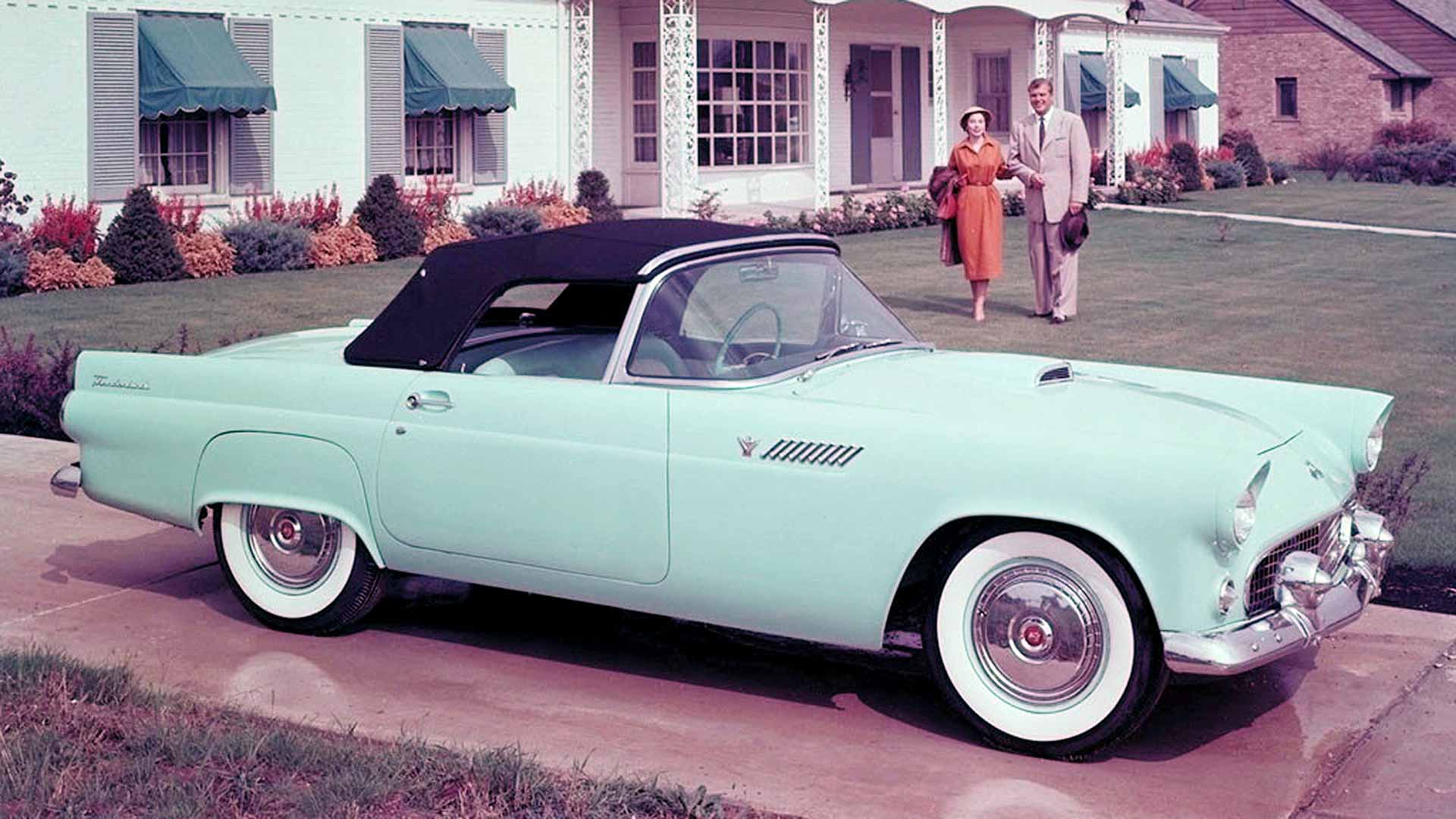
The greatest automobiles built from sea to shining sea
© FordThe United States did not invent the car, but America embraced it as if it did. Transforming life across North America, the automotive revolution helped define the nation.
We have picked 35 important cars, covering more than a century of innovation and development. They all demonstrate America’s contribution to the world of motoring.
-
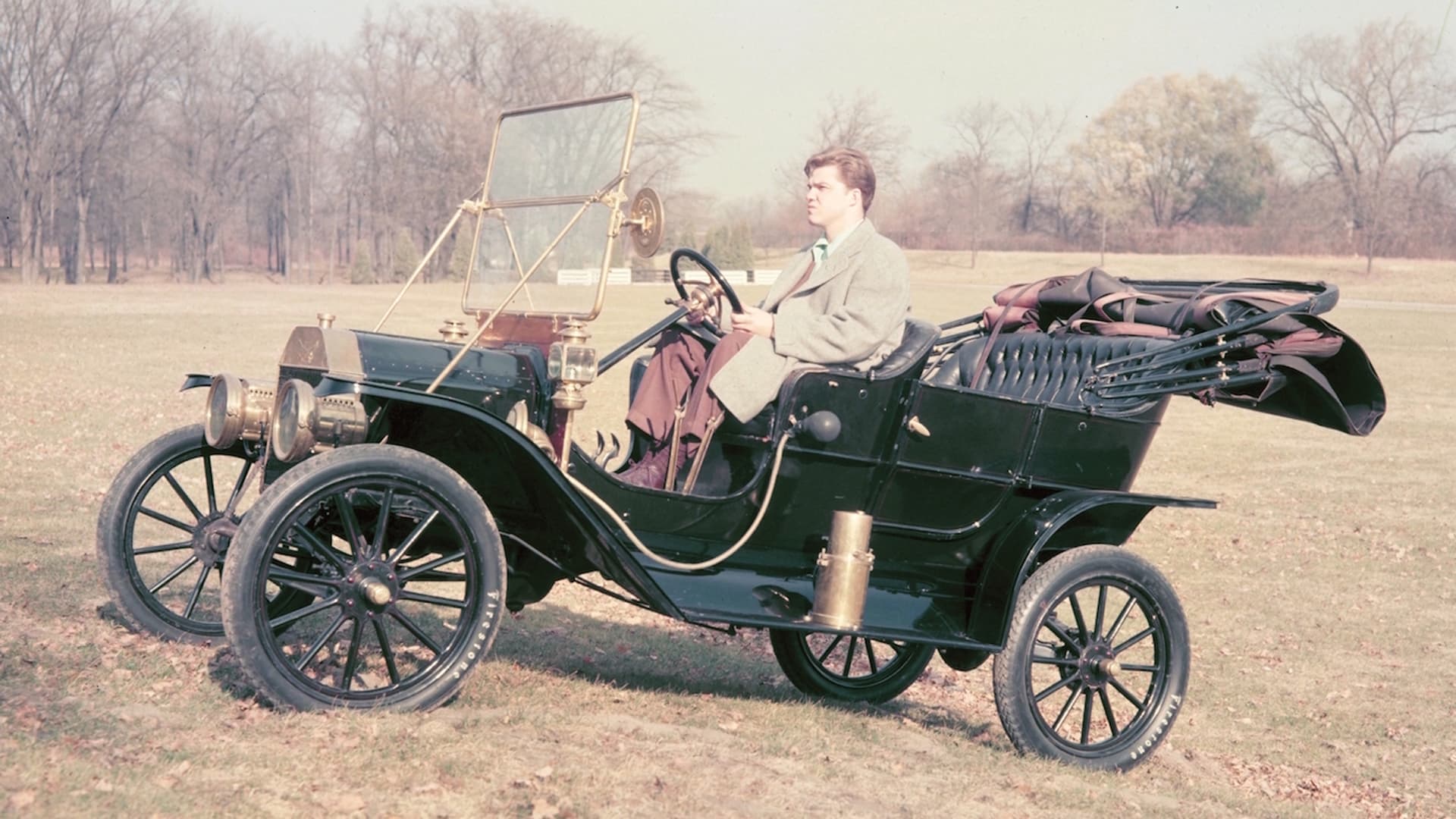
1908 Ford Model T
© FordProduced for 19 years, and with 15 million examples built, the Ford Model T still remains one of the best-selling cars of all time. It also represents one of the few cars that became cheaper as time passed, dropping from $825 in 1909 to just $260 in 1925.
What made the Model T significant, and cheap, was Henry Ford’s adoption and refinement of the modern ‘mass production’ assembly line. Efficiency savings meant the time needed to build a Model T reduced from 12.5 hours to just 90 minutes. Passing on these savings to customers made car ownership an affordable reality.
-
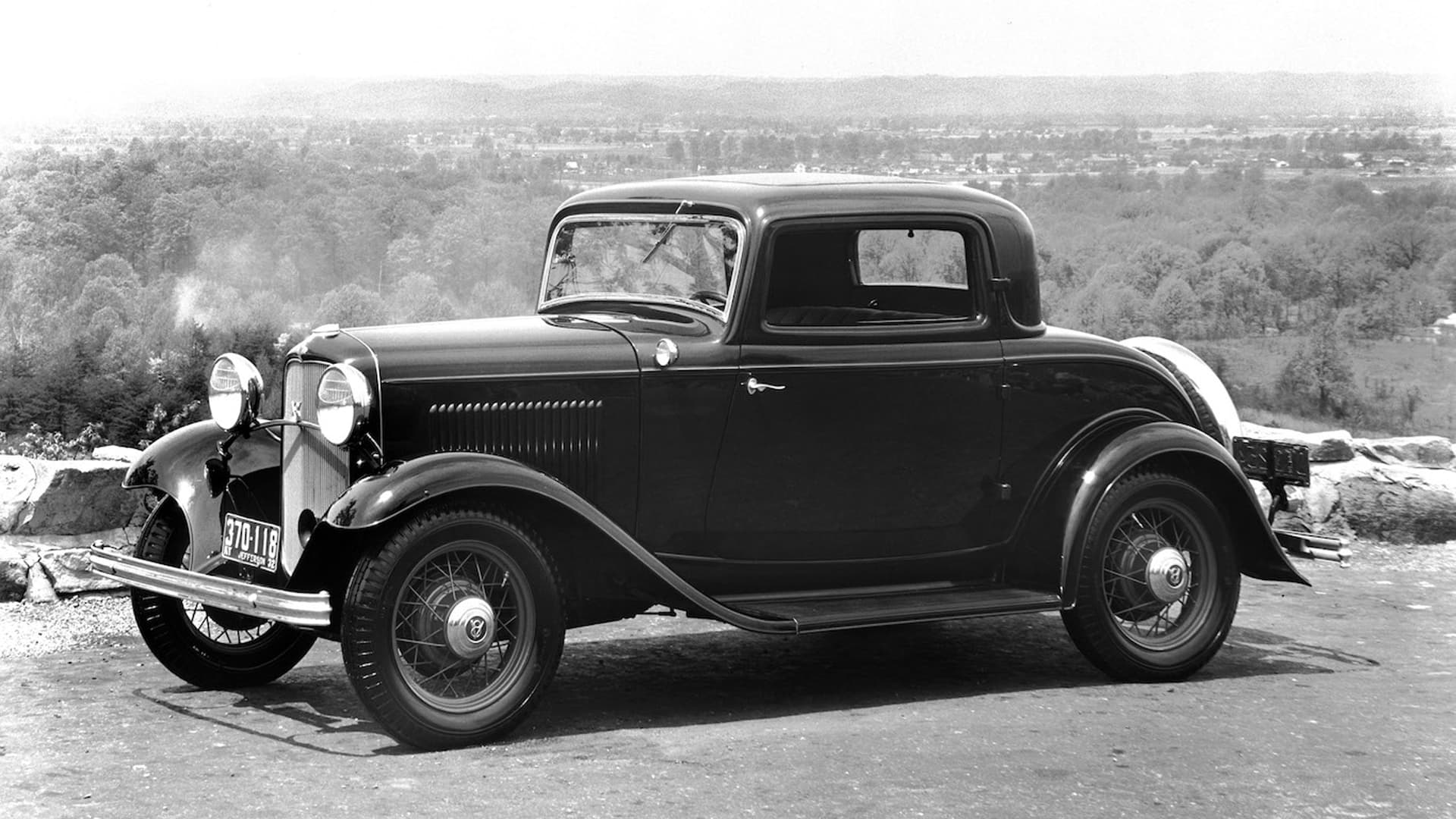
1932 Ford Three Window Coupe
© FordAsk any hot rodder about the most sought-after cars to customise, and the 1932 Ford is almost guaranteed to be top of the list. In particular, the clean lines of the rarer three-window coupe are the most desirable – note that the front windscreen isn’t included in the window count.
The Beach Boys song and album ‘Little Deuce Coupe’ was named after the three-window Ford, while it also made an appearance in the iconic street racing movie ‘American Graffiti’. Despite a short production period, the 1932 Ford models made a huge contribution to car culture.
-
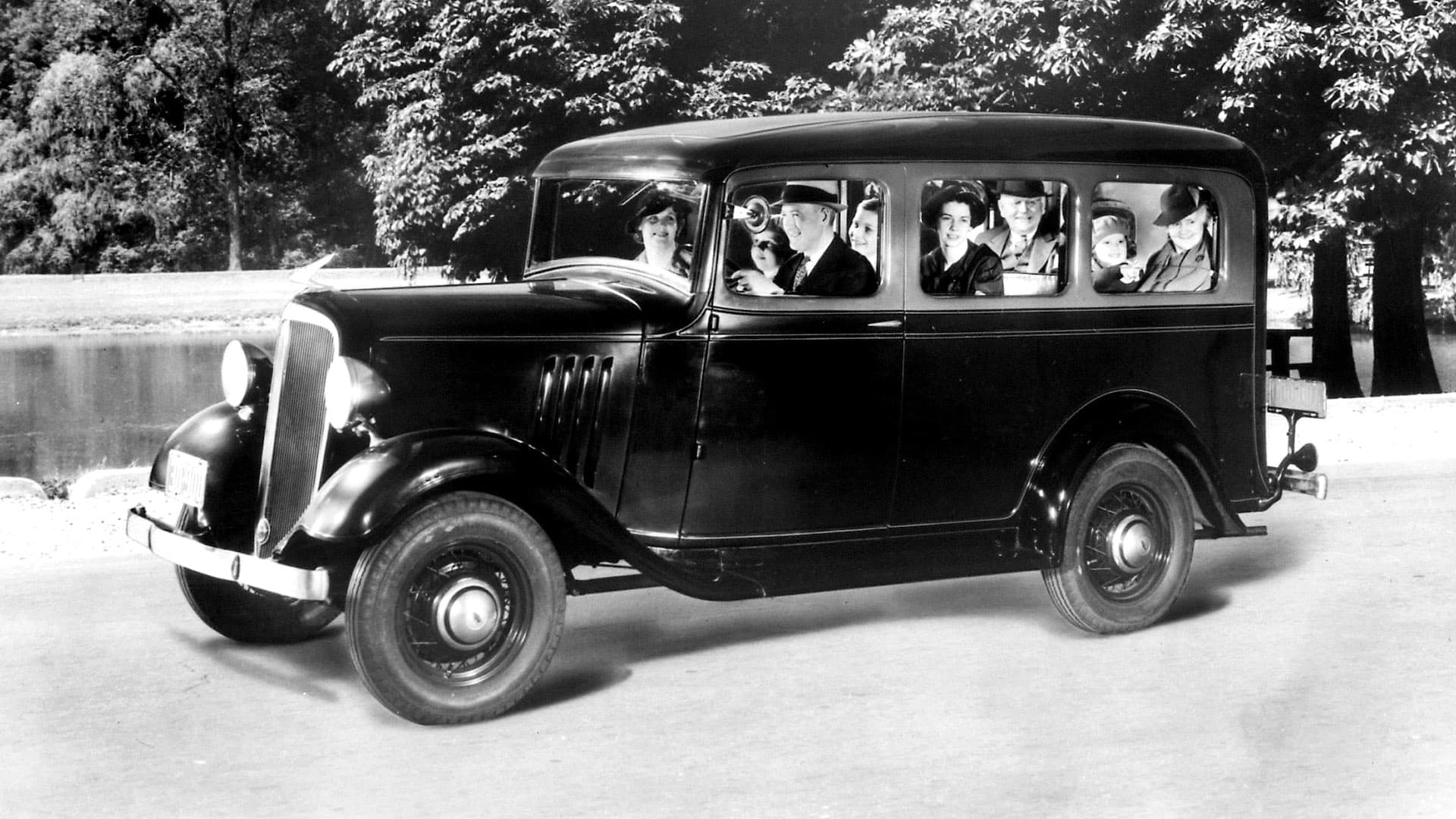
1935 Chevrolet Carryall Suburban
© ChevroletCreated in the aftermath of the Great Depression, this was the first time Chevrolet used the Suburban nameplate. The 1935 Carryall saw a two-door station wagon body mounted atop a practical half-ton truck chassis.
It created the world’s first true utility vehicle, with seating for eight and the option to change layouts for extra luggage space. The legions of modern SUVs, like the latest Chevrolet Suburban, owe their existence to this car.
-
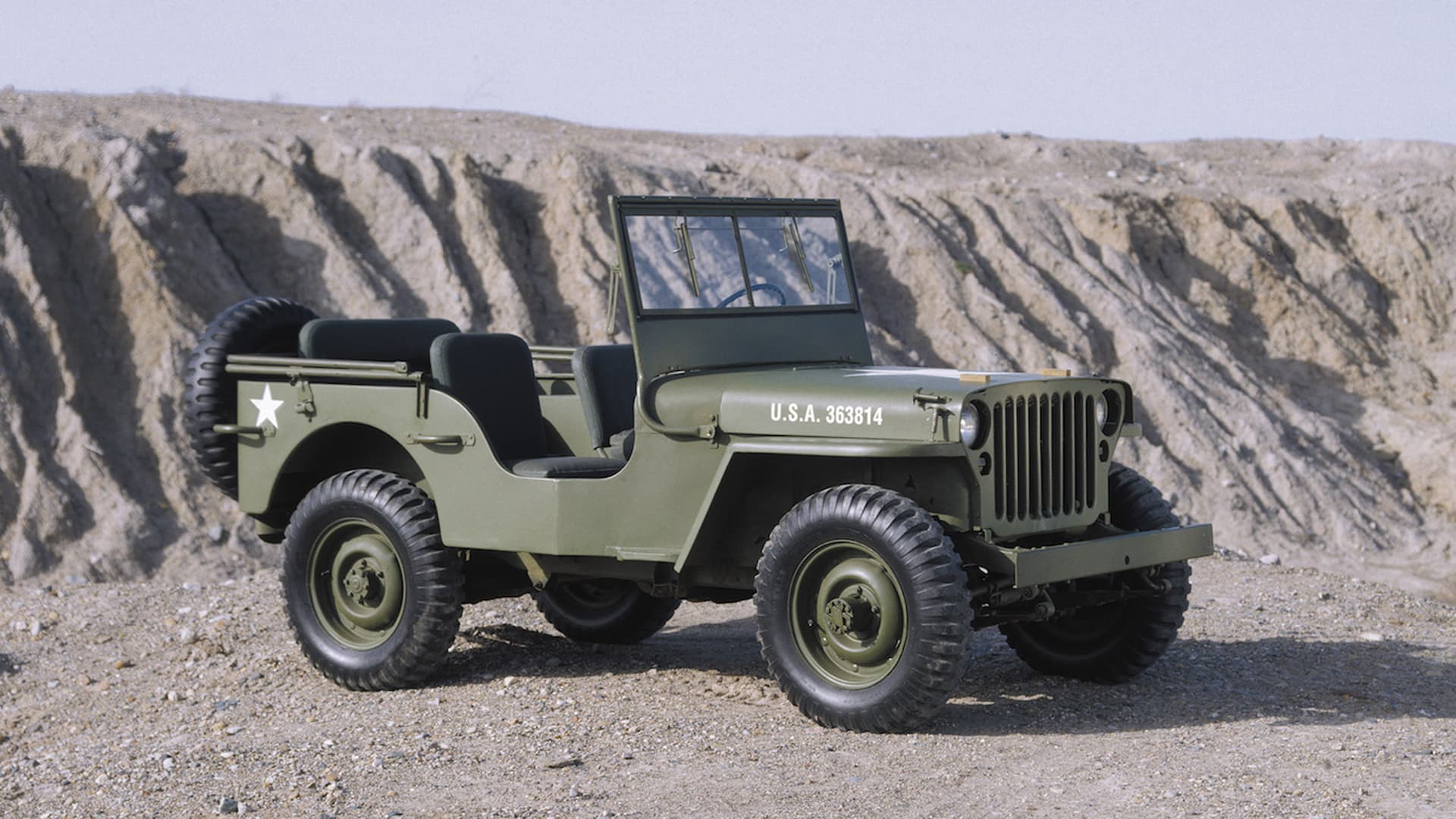
1941 Willys MB Jeep
© StellantisFor those who don’t care too much about cars, the word ‘Jeep’ is virtually synonymous for any kind of four-wheel-drive off-road vehicle. Although the US Army had developed 4WD vehicles before, the MB was born from the urgent demand created by World War II for large numbers of lightweight utility vehicles.
Although produced by both Ford and Willys during wartime, after the conflict Willys retained rights to the Jeep name. This allowed it to produce civilian models, and create a brand that still endures today, despite several changes in ownership.
-
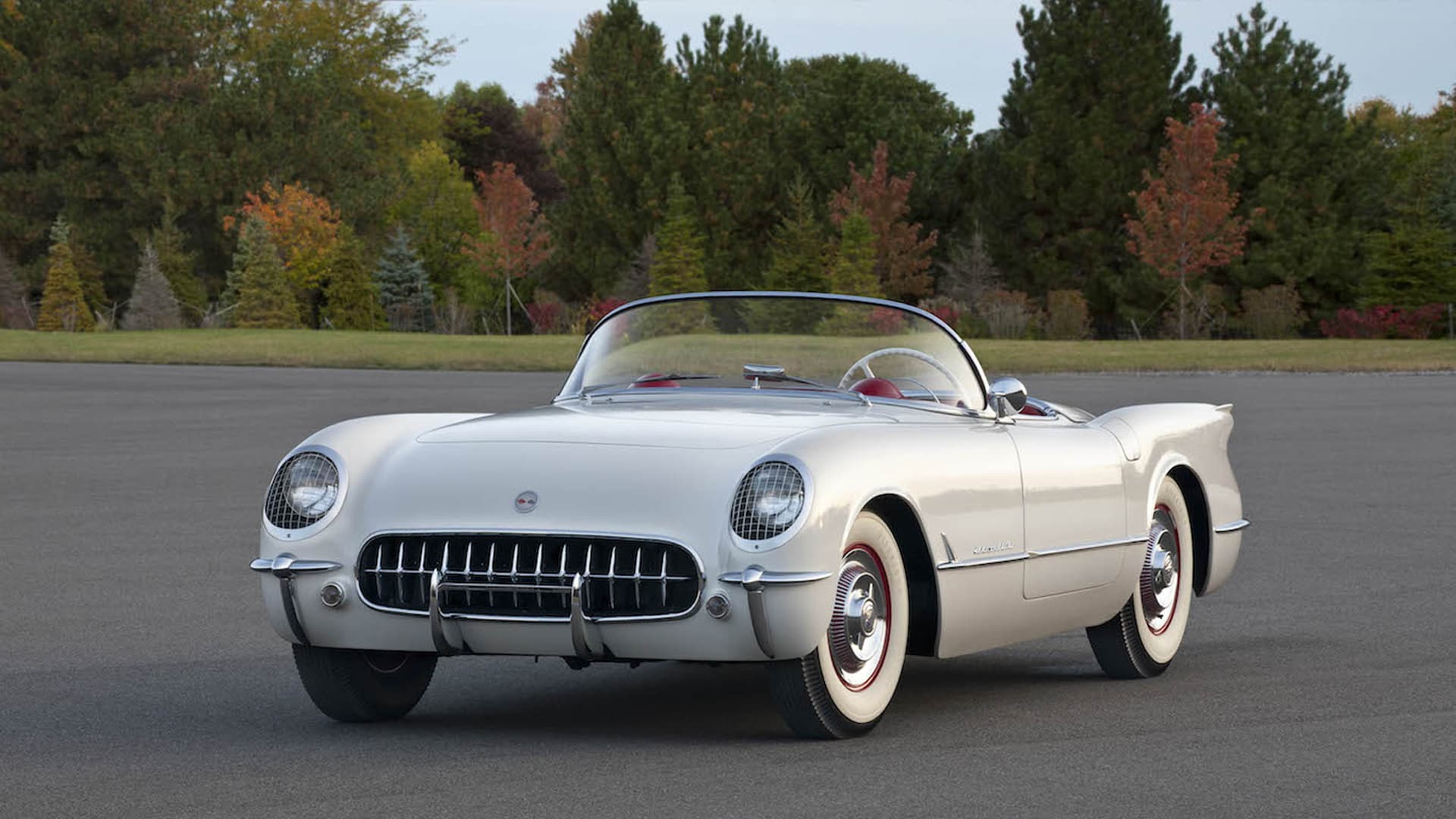
1953 Chevrolet C1 Corvette
© GMIntended to compete against sports cars like the Nash Healey, the original Chevrolet Corvette was rushed to production just six months after being shown to the world in 1953. Although fibreglass bodies had been used previously for limited production, the C1 Corvette marked the first time the material was used for mass manufacturing.
The first Corvettes were low on power – with just 150 horsepower from a straight-six engine – and suffered from poor build quality. Yet 67 years later, the model still endures, and represents a slice of the American dream.
-
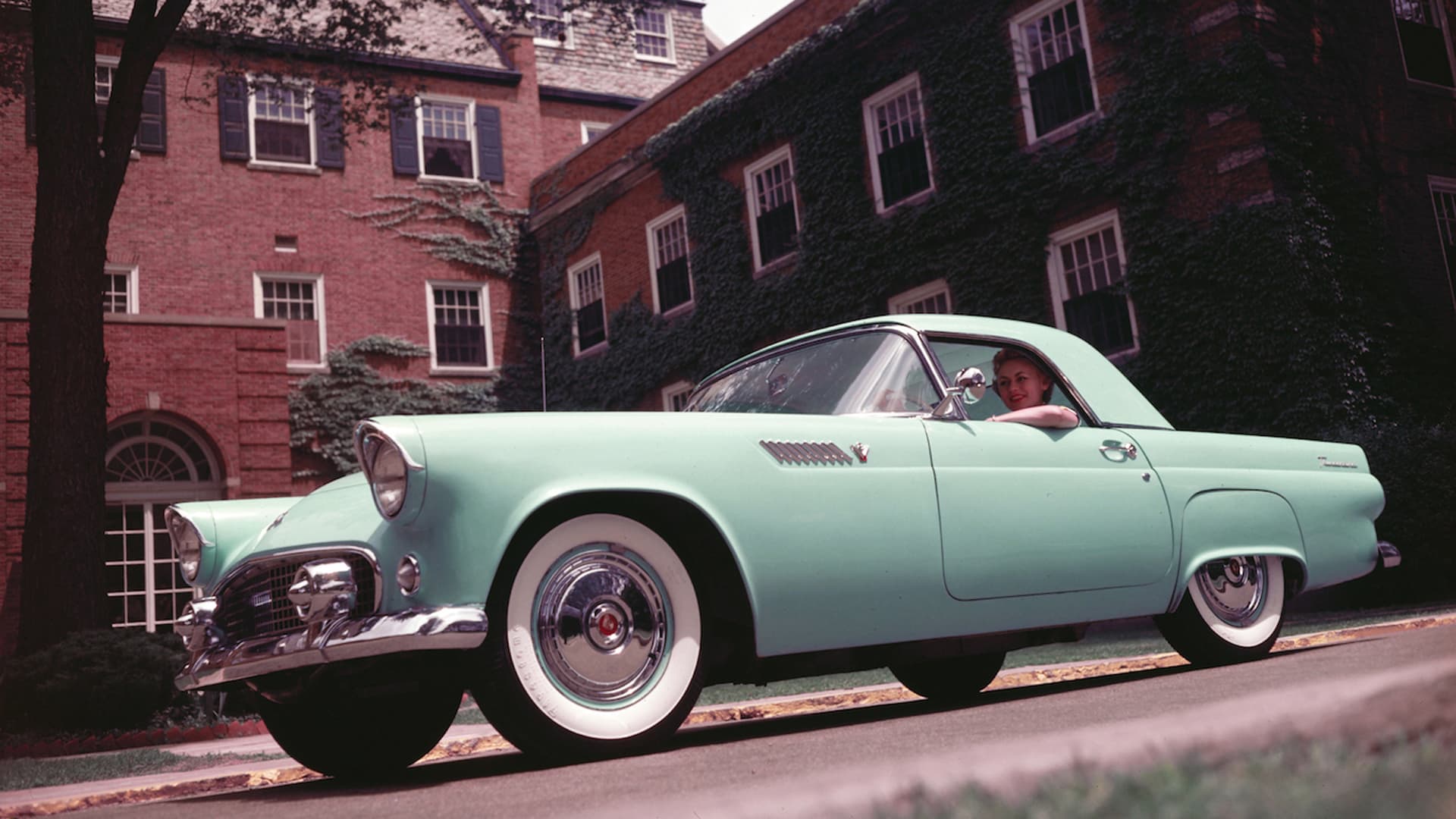
1955 Ford Thunderbird
© FordWhile it entered the market at a similar time to the Corvette, and looked similar, Ford was careful to market the Thunderbird in a different direction. In doing so, it created the uniquely American ‘personal luxury car’ segment. This meant an emphasis on comfort and convenience, powerful V-8 engines, and high levels of standard equipment.
The Thunderbird would grow ever larger and more gauche over time, culminating in the wallowing land yachts of the 1970s. However, the original car of 1955 enjoyed the simplicity of a two-seater convertible body, with a 292-cubic inch V-8 engine.
-
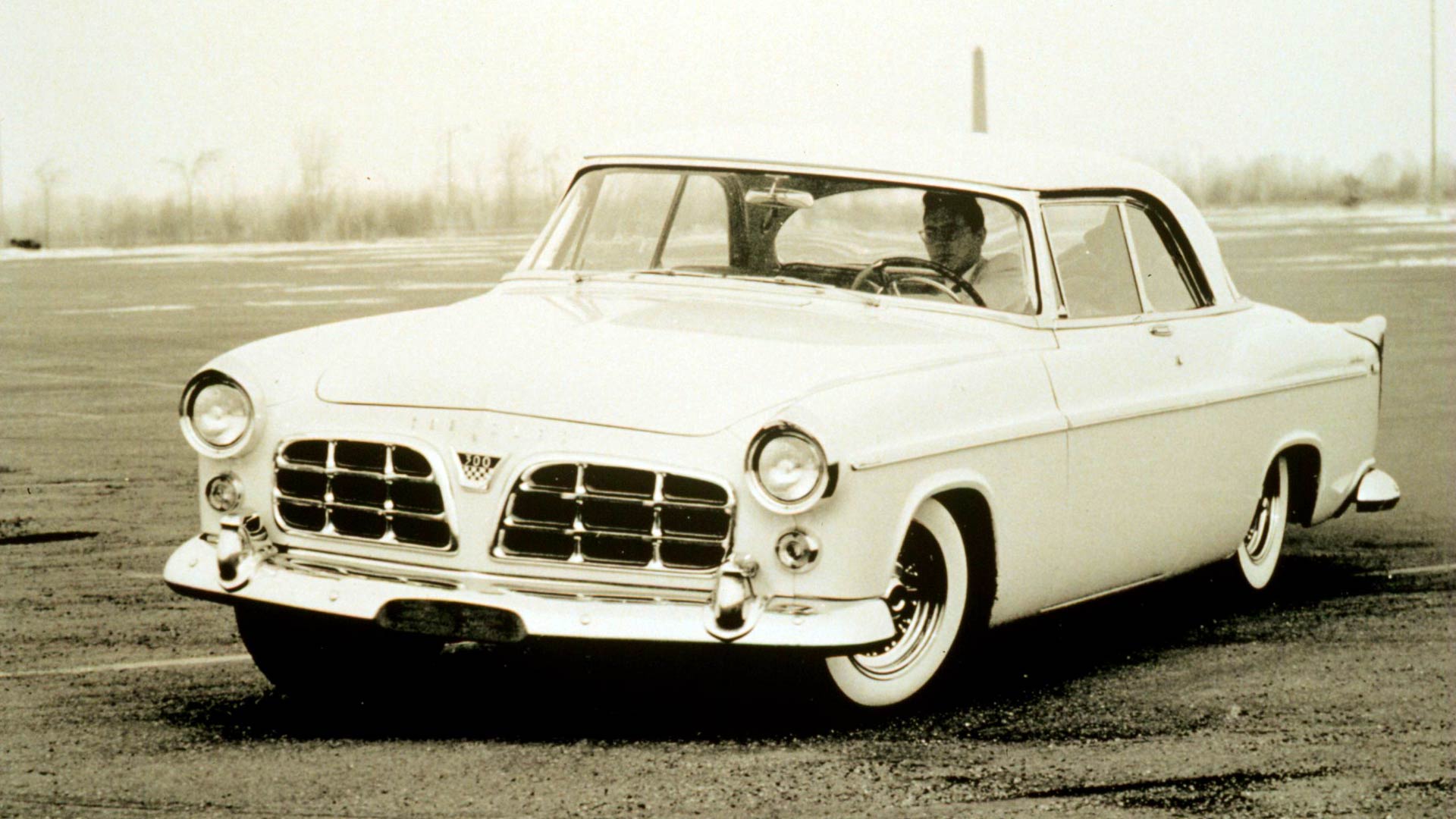
1955 Chrysler C 300
© StellantisAlthough the Chrysler C-300 may seem quite unassuming, beneath its Virgil Exner styling was a care built for competition. Created for NASCAR homologation purposes, the name of the C-300 came from its 300 horsepower 331-cubic inch Hemi V-8 engine.
The C-300 would dominate on the NASCAR circuit, with driver Tim Flock taking 18 victories on the way to the 1955 Grand National Championship title. For 1956, the C-300 saw its power output grow to 355 horsepower.
Despite its motorsport prowess, Chrysler sold just 1,725 examples. Yet it set the scene for road-going versions of race cars for decades to come.
-
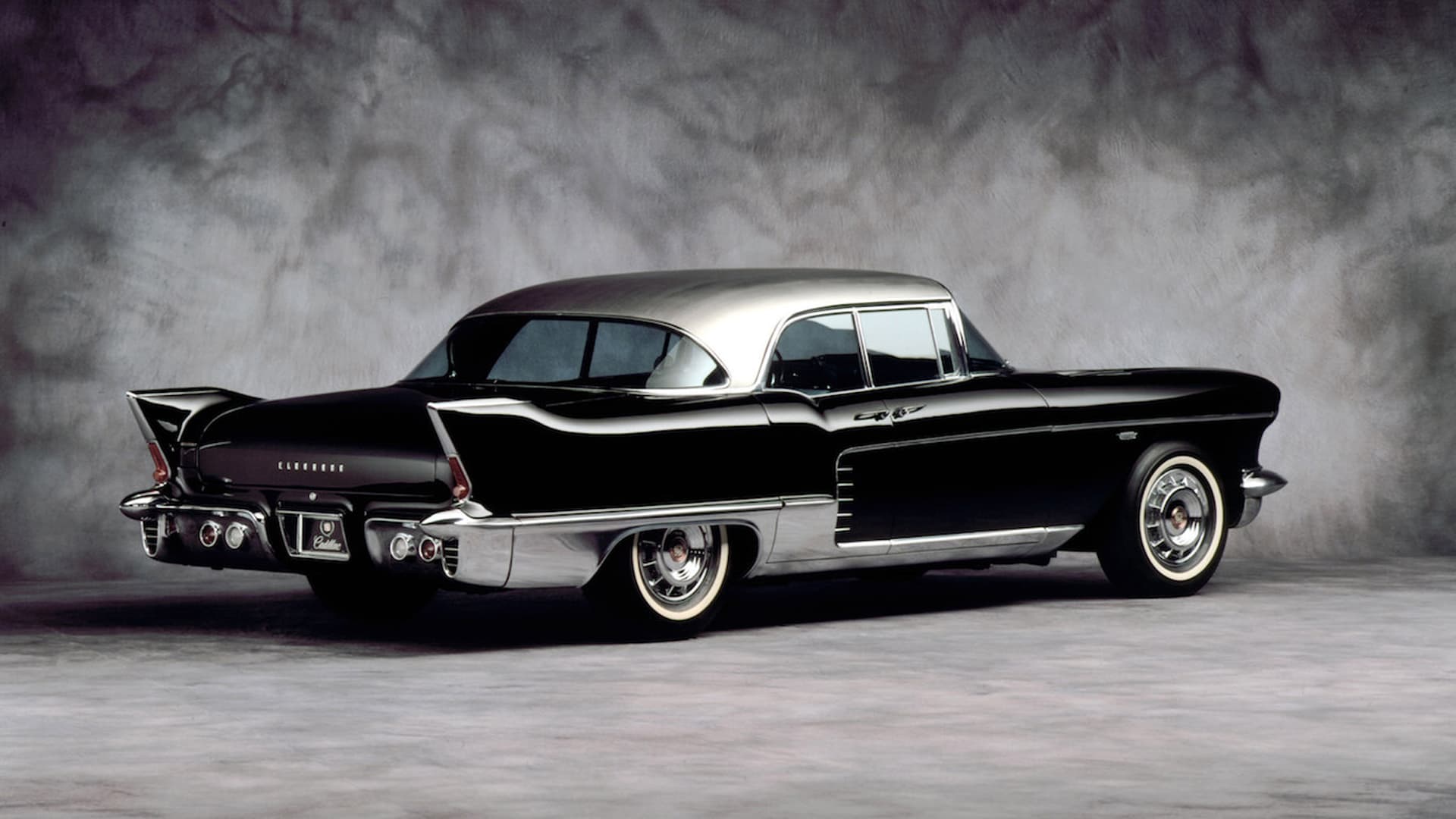
1957 Cadillac Eldorado Brougham
© GMSelf-levelling air suspension is still today mainly the preserve of luxury cars, but this is a technology that Cadillac introduced all the way back in 1957. The Eldorado Brougham featured a complex air system, intended to give a smooth and comforting ride, although it proved to be unreliable.
Air ride was just one standard feature on this high-end personal luxury car. Cruise control, air conditioning, electric door locks, automatically dimming headlights and electric windows were also part of the package. This pushed the price tag to more than that of a contemporary Rolls-Royce.
-
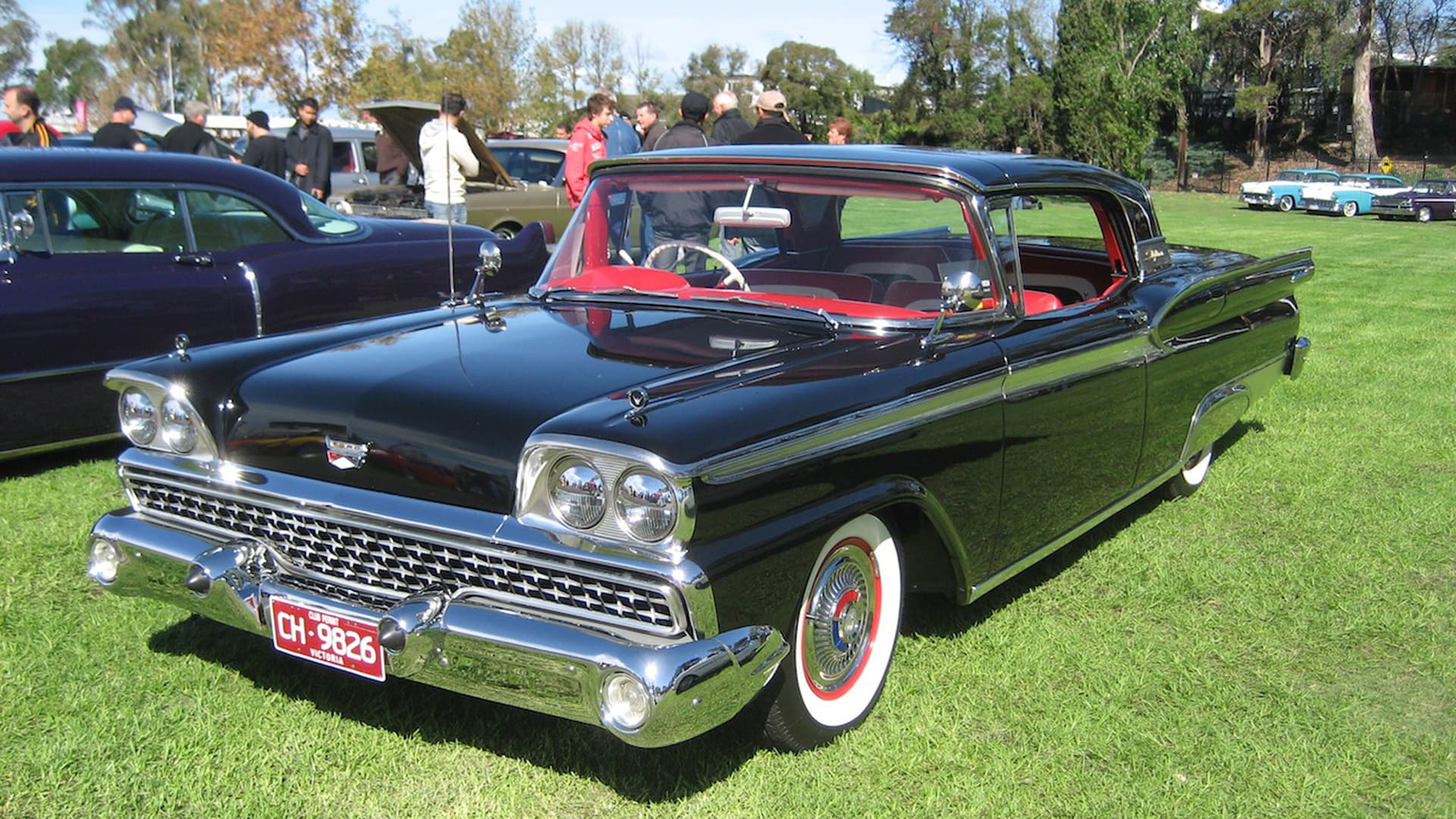
1957 Ford Fairlane 500 Skyliner
© Wikimedia sicnagThink the idea of a retracting hardtop roof was something invented by Mercedes-Benz in the late 1990s? Think again – Ford was doing it some four decades earlier with the Fairlane 500 Skyliner. It was one of the first mass-produced cars to feature a folding metal roof.
Requiring seven electric motors, six locking mechanisms, and almost 650 feet of wiring, the Skyliner was a complex piece of engineering. It also took over much of the luggage space in the trunk, and added additional weight and cost.
-
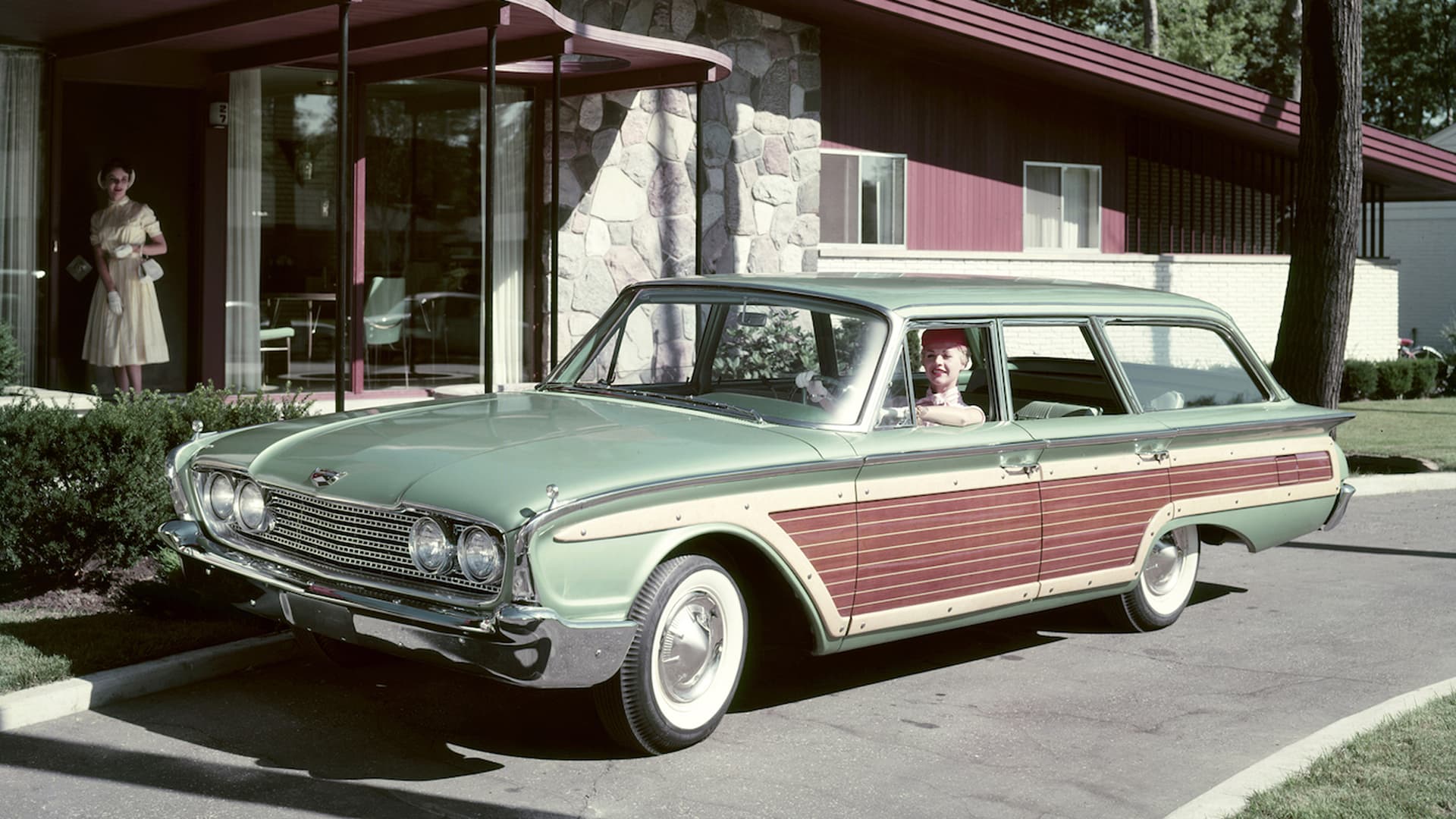
1960 Ford Country Squire
© FordTo understand the path to the modern crossover, you need to look back at the American family station wagon of the 1950s and 1960s. A full-size wagon like the Country Squire featured acres of – fake – wood grain trim, lots of luggage space, and seating for up to eight passengers.
The Country Squire managed to stay in production from 1950 to 1991, and became an icon of suburban America. While the association with staid middle class life damaged the Country Squire’s image at the time, today it has developed a cult following.
-
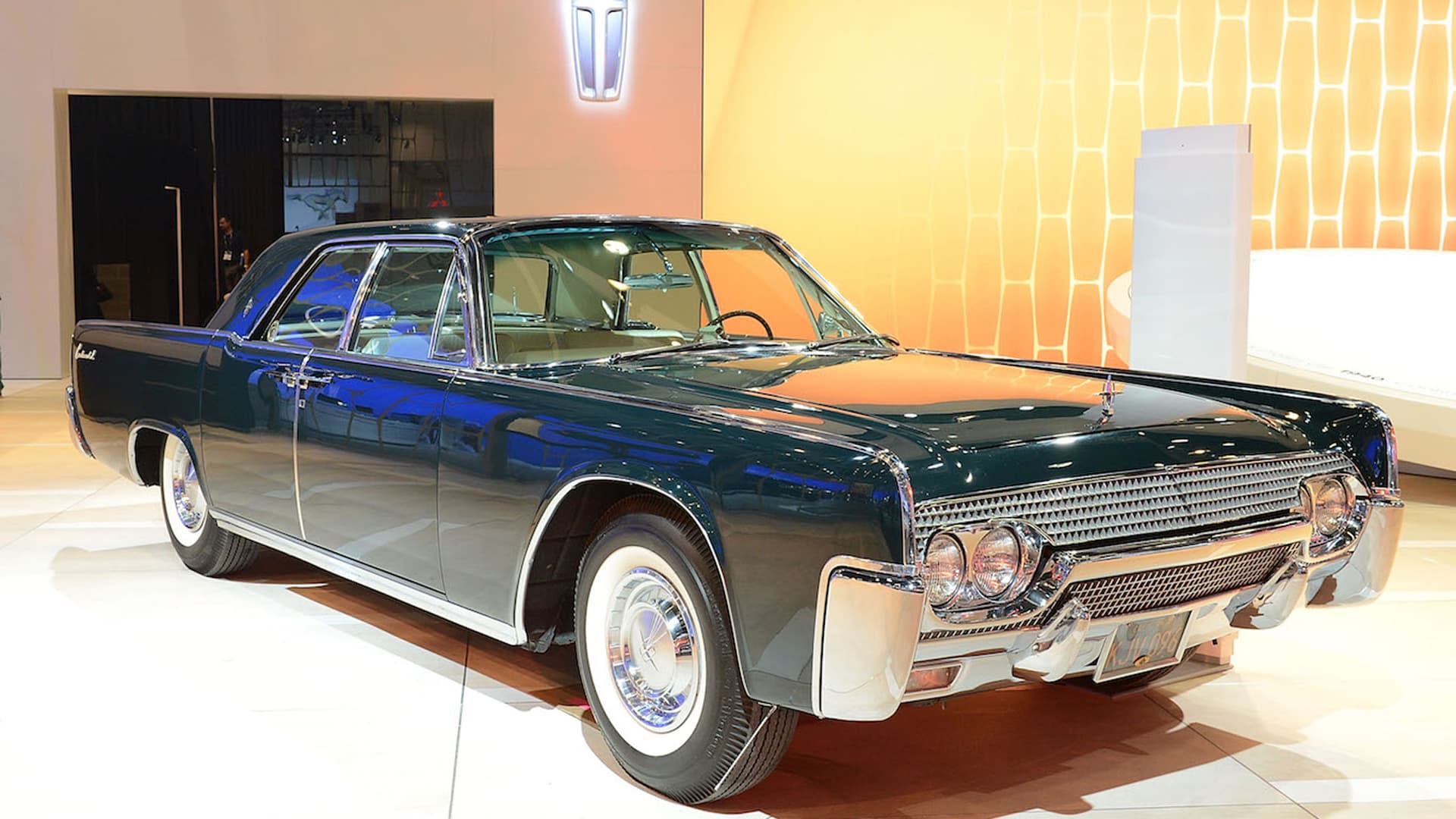
1961 Lincoln Continental
© LincolnDesigned to save the Lincoln division money, the fourth-generation Continental was based around a single four-door design offered in sedan, hardtop and convertible forms. It was also considerably smaller than its predecessors, even if it still managed to weigh more.
What makes the 1961 Continental significant, and undeniably cool, was the use of rear-hinged doors. Intended to make access to the rear seats easier, they also gave the Continental a unique profile.
Notably, a ’61 Continental was the basis for the SS-100-X Presidential State car, used by President John F. Kennedy on his fateful 1963 trip to Dallas.
-
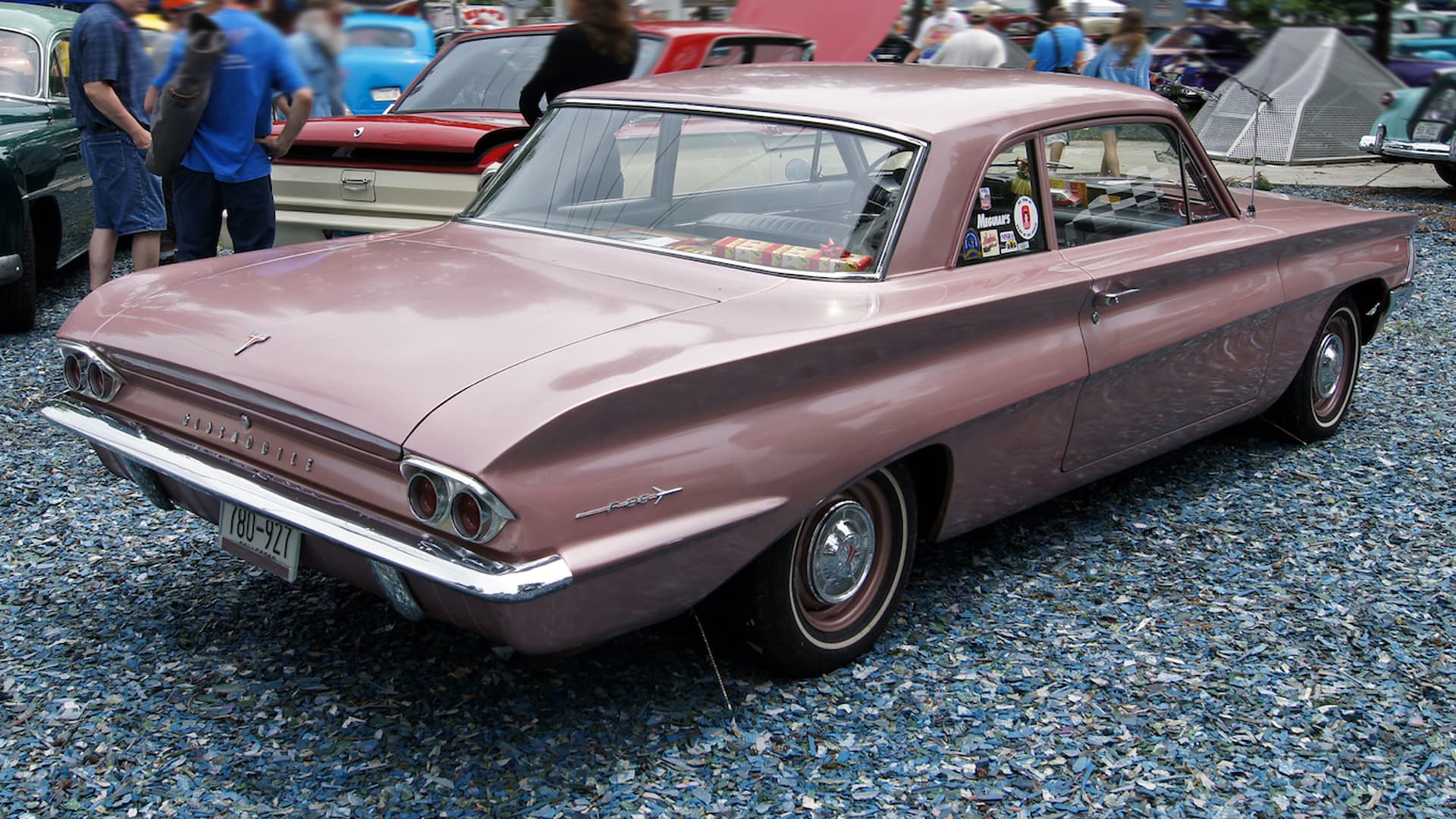
1962 Oldsmobile F85 Turbo Jetfire
© Wikimedia Greg GjerdingenThe 1973 BMW 2002 Turbo is often seen as the first turbocharged production car, but General Motors took that title over a decade earlier. For a country obsessed with naturally aspirated V-8 engines, the Jetfire version of the pretty Oldsmobile F-85 must have been something of a shock.
Producing 215 horsepower and 301 lb-ft of torque, the 215-cubic inch (3.52-liter) turbo V-8 also featured water and methanol injection. Performance was on par with engines twice the size, but this was new technology and buyers were understandably cautious.
High prices meant only 3,700 Jetfires would be sold, and GM would shelve turbo petrol engines for another decade.
-
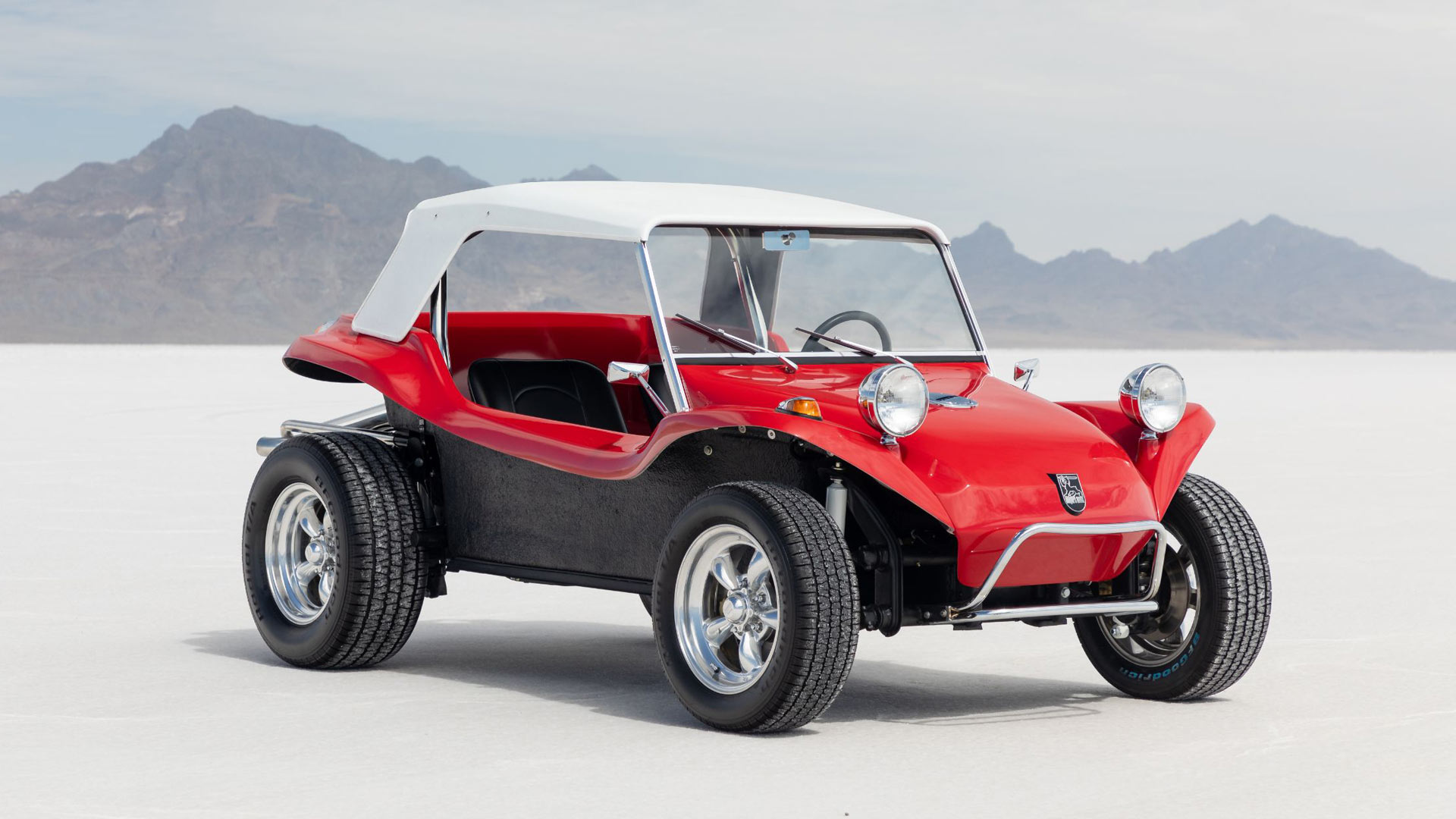
1964 Meyers Manx Dune Buggy
© VolkswagenThe late Bruce Meyers did not invent the dune buggy, but he did build one with mass appeal. He combined a fiberglass body with a Volkswagen engine, creating the fun and affordable Meyers Manx.
Meyers had initially only planned to produce a handful of cars for him and his friends. He ended up making 7,000, with some 250,000 copies produced by other companies.
The importance of the Meyers Manx saw it inducted into the National Historic Vehicle Register in 2014.
-
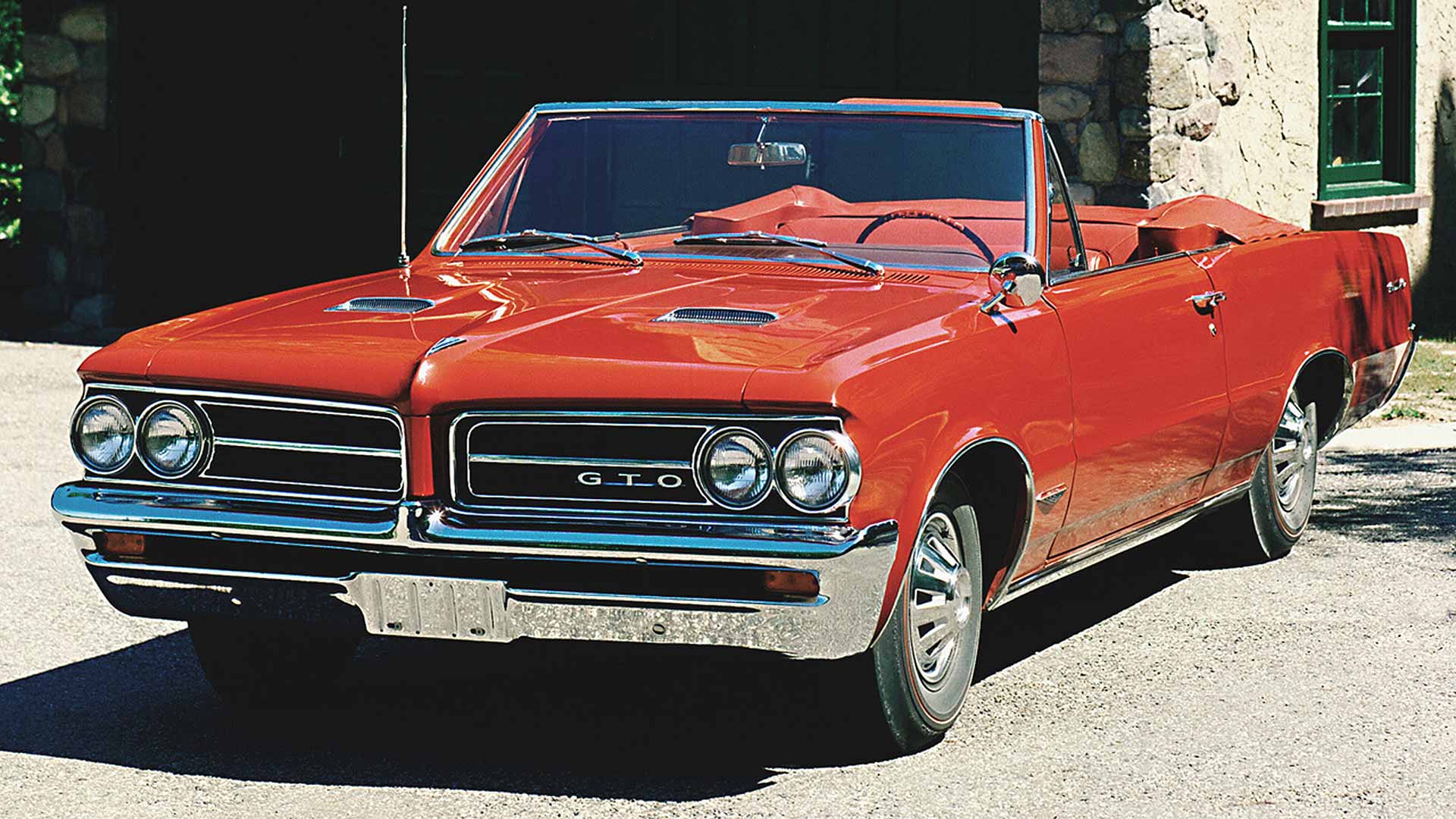
1964 Pontiac GTO
© NewspressDefining the original American ‘muscle car’ is harder than you might think. However, the 1964 Pontiac GTO embraced both the mechanical definition of having a large V-8 engine in a two-door body, but also the ideas of low price and desirability.
With a 389-cubic inch (6.4-liter) V-8 producing 325 horsepower, the GTO also came with a standard three-speed manual transmission and stiffer suspension.
In common with muscle cars to follow, multiple options were offered, including a Tri-Power carburettor boosting output to nearly 350 horsepower. This would set the benchmark for other manufacturers to follow.
-
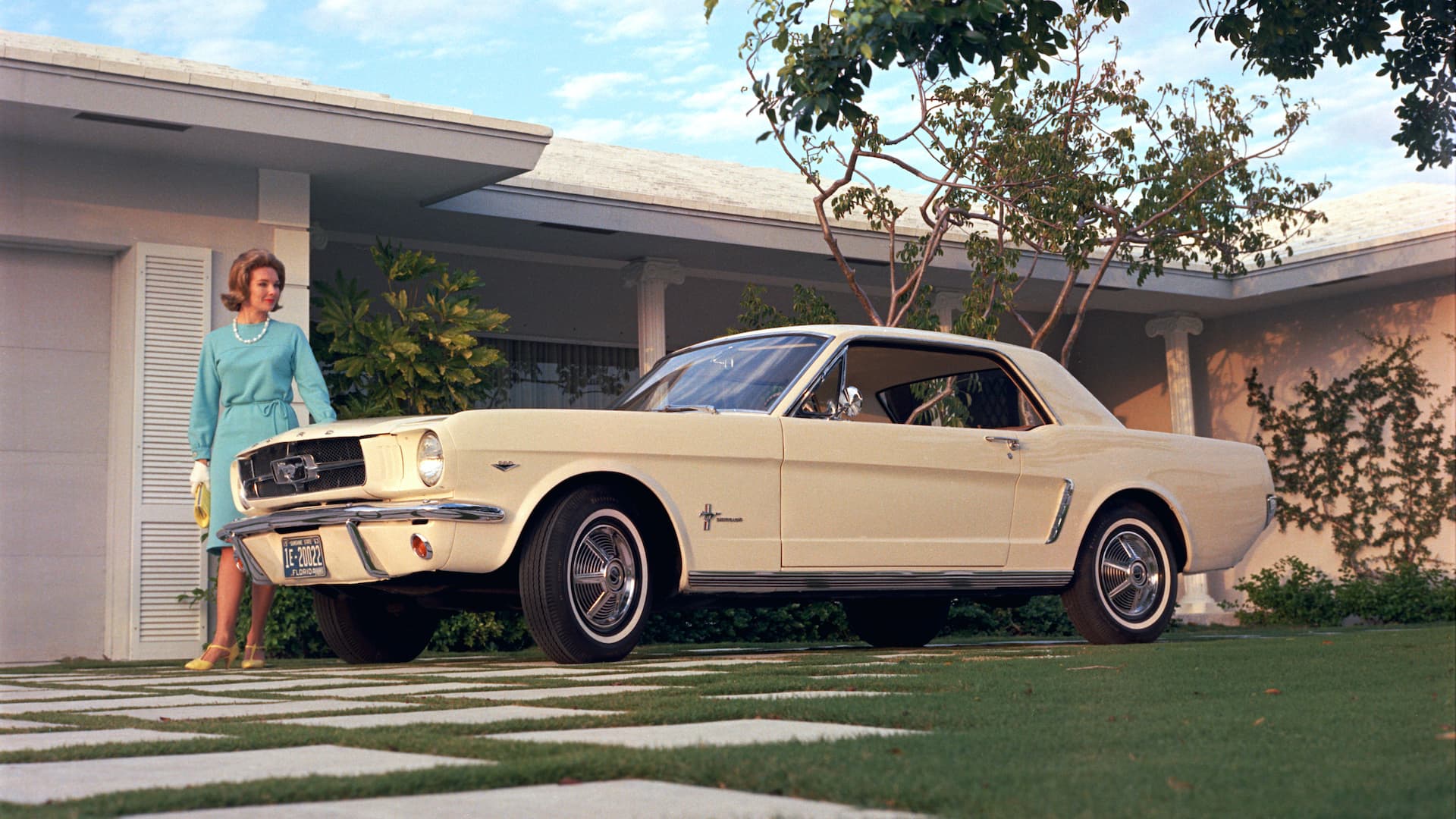
1964 Ford Mustang
© FordAlong with pushing the ‘pony car’ concept into the eye of the public, the Ford Mustang has become a global emblem for the United States. Ask anyone outside of the USA to name an American car, and the Mustang is likely to be the one many will mention first.
Almost three million examples of the first-generation Mustang were produced, with Ford selling more than 22,000 immediately at the launch. The addition of performance models from Shelby, and constant model-year tweaks, ensured it remained competitive.
Now into its sixth generation, the importance of the Mustang is hard to ignore.
-
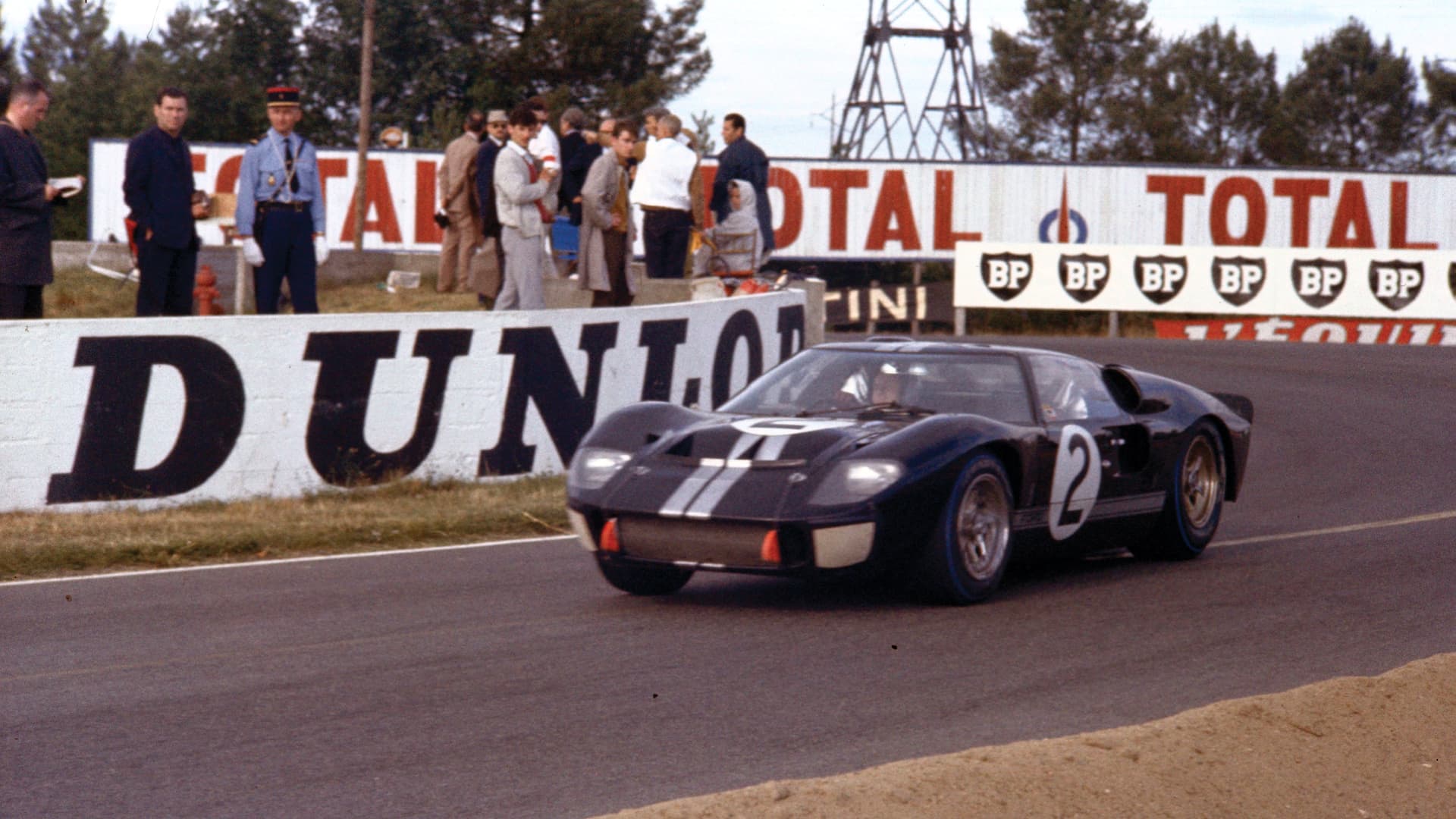
1966 Ford GT40 Mk2
© FordWinning the Le Mans 24 Hours outright is a major achievement. Doing so to spite another manufacturer is something else again, but that’s exactly what Ford did with the GT40.
Born from Henry Ford II’s frustration at Enzo Ferrari reneging on an agreement to sell him the Ferrari company, the GT40 would take victory at Le Mans four times.
After a troubled development, it was the Mk2 GT40 version with a 427-cubic inch (7.0-liter) V-8 engine – and the help of Carroll Shelby – that took Le Mans victory in 1966. Three more wins would follow, creating the lineage for the current Ford GT supercar.
-
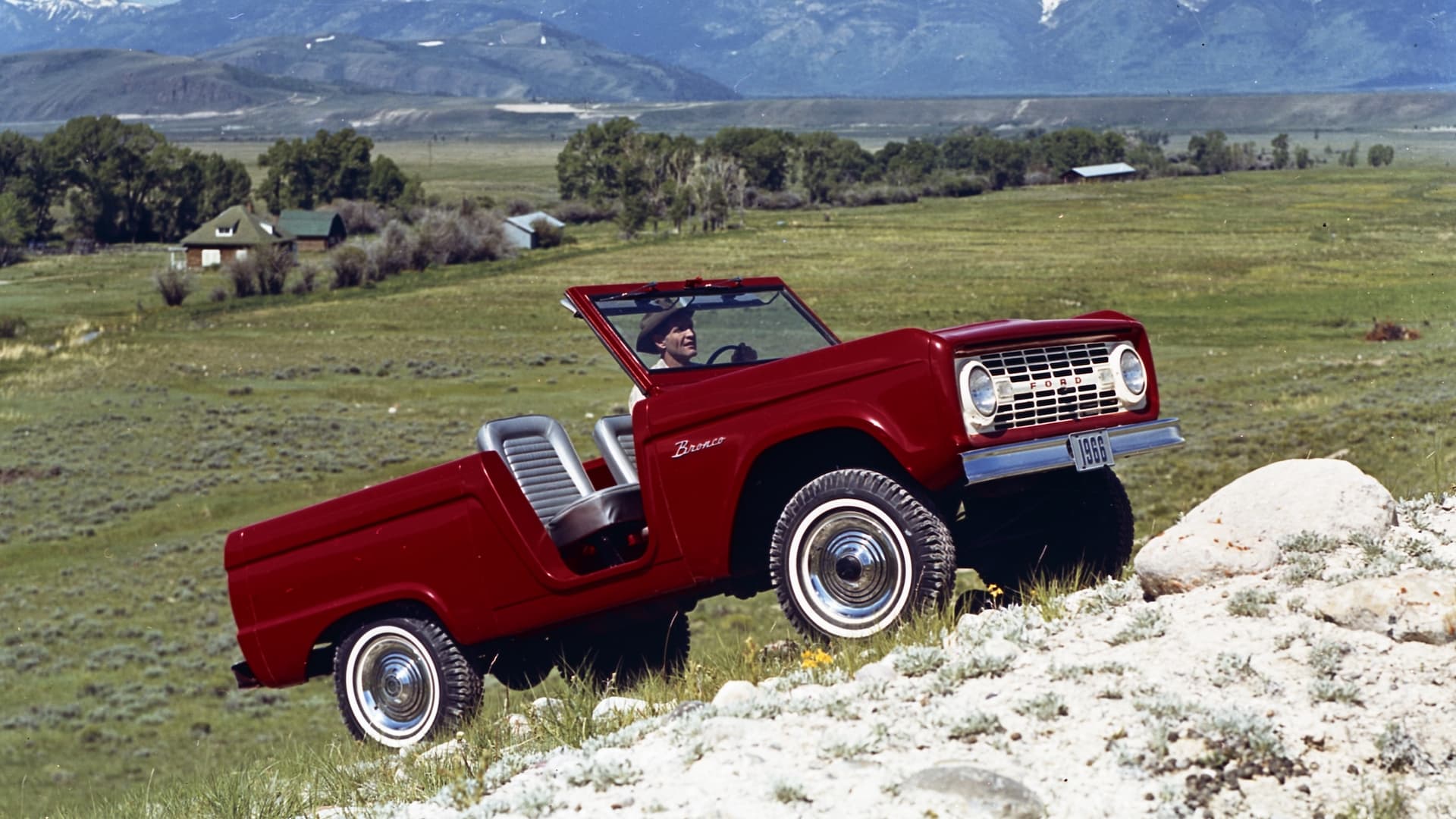
1965 Ford Bronco
© FordThe Ford Bronco was designed to channel the same degree of driving fun as the Mustang, but into an off-road package. It combined a compact chassis with a four-wheel-drive layout, plus a choice of practical body styles.
It made the Bronco the first true modern SUV, perfect for commuting to work or heading to the beach. Values of classic Broncos have increased hugely in recent years, with buyers swept along on a wave of nostalgia.
The excitement surrounding the 2021 version proves just how important the Bronco is.
-
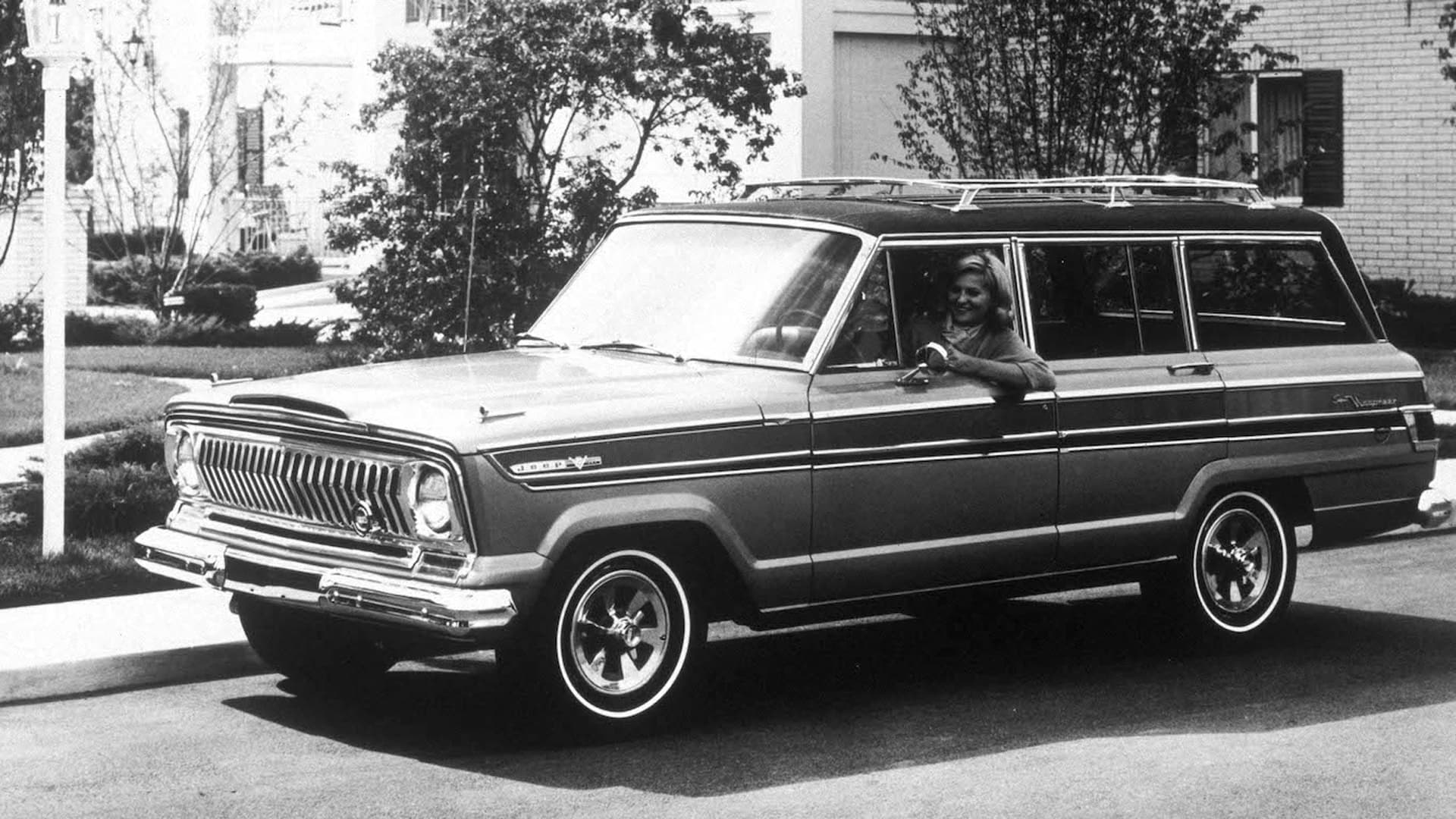
1966 Jeep Wagoneer
© StellantisForget the Range Rover – this was the first premium SUV. Built by the Kaiser Jeep Corporation between 1966 and 1969, the Super version brought even more luxury and comfort to the existing Wagoneer 4×4.
That meant a more powerful 327-cubic inch (5.4-liter) Vigilante V-8 engine with 270 horsepower, air conditioning, a push-button radio, tinted windows and a power-assisted tailgate.
With only around 1,500 produced, Super Wagoneers are highly prized by Jeep collectors today.
-
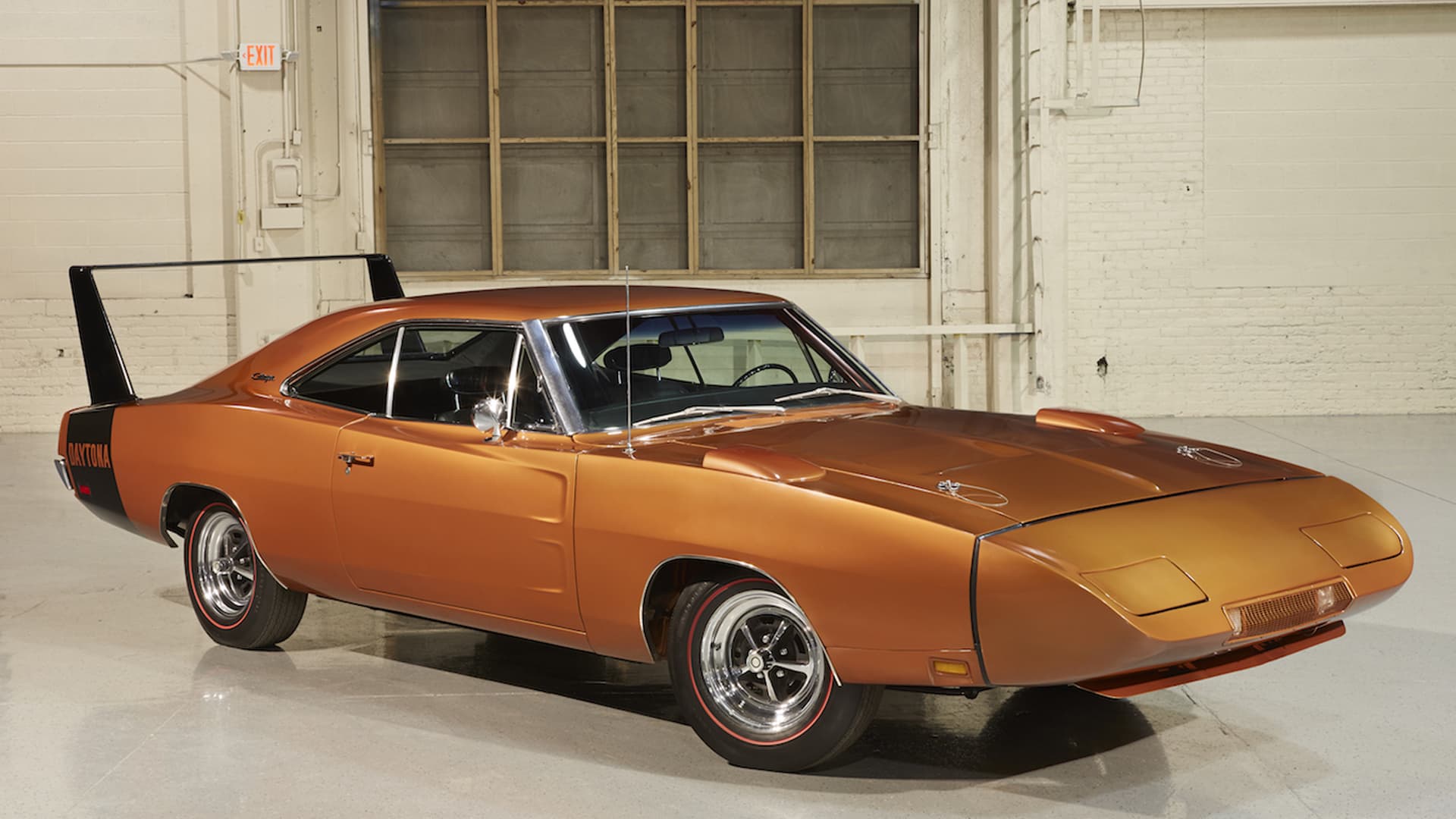
1969 Dodge Charger Daytona
© StellantisNASCAR in the late 1960s was-ultra competitive, with manufacturers looking to exploit loopholes in the rules to gain an advantage. This gave rise to the Aero Cars, which used limited homologation requirements to build cars optimised for high speed on the superspeedway circuits.
With a giant 23-inch tall rear wing, extended nose cone, and vents above the front wheels, the Charger Daytona was the first NASCAR to break the 200mph barrier on-track.
Today, of the 503 homologation cars sold for road use, the versions fitted with the 426-cubic inch Hemi V-8 with 425 horsepower are the most collectible.
-
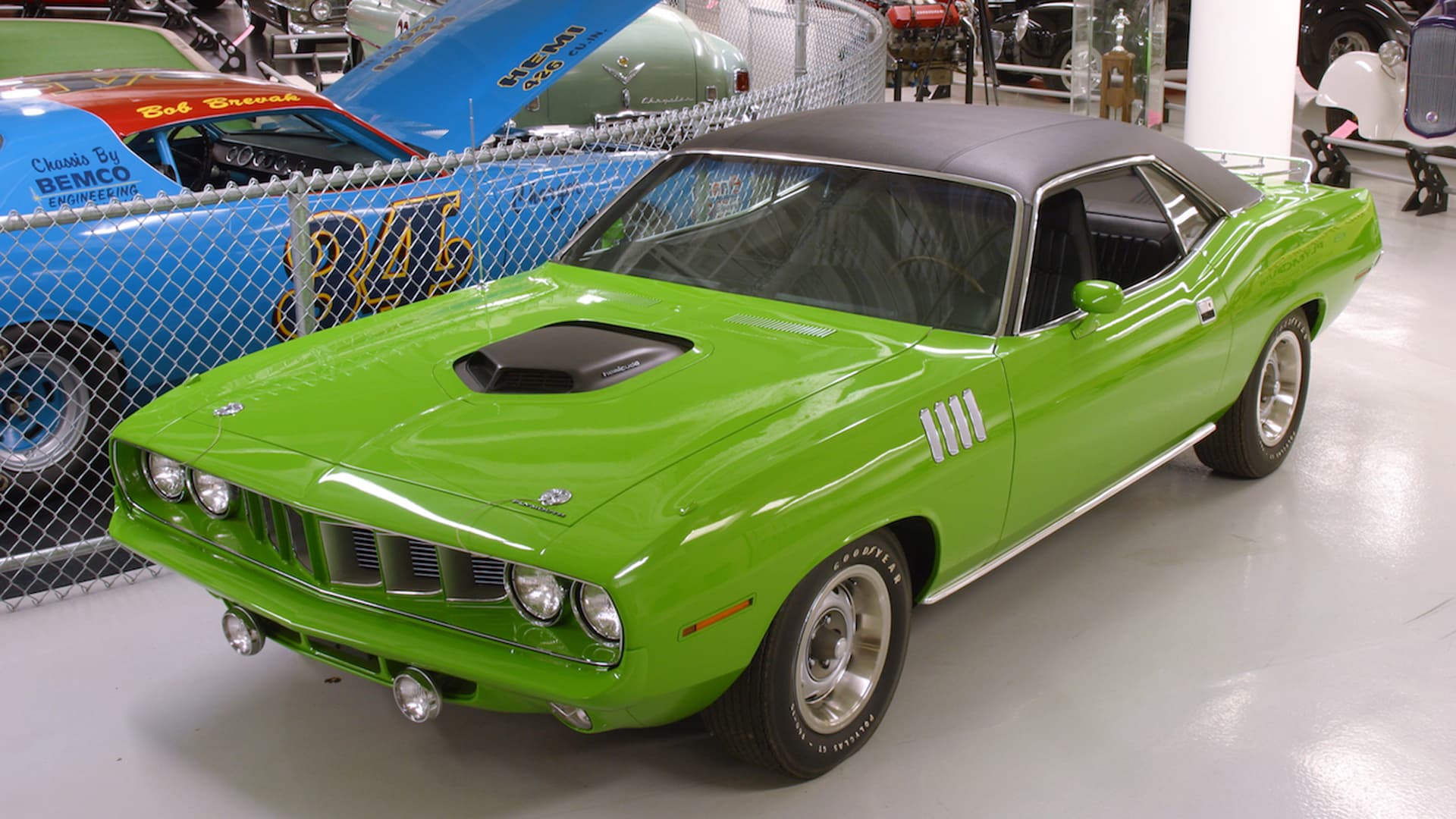
1971 Plymouth Hemi ’Cuda
© StellantisSize matters in America, and even more so in the muscle car wars of the late 1960s and early ‘70s. Whilst the 440-cubic inch Hemi V-8 offered in the Plymouth ’Cuda might not have been the most powerful, it was one of the biggest. It is also fair to say that 390 horsepower and 490 lb-ft of torque were more than sufficient, too.
The 1971 ’Cuda represented the peak of the muscle car era, with paint options like Lime Light green, Vitamin C orange, and Moulin Rouge pink epitomising the outrageousness of it all.
Emissions standards would result in less power the following year, and the ’Cuda would be gone by 1974.
-
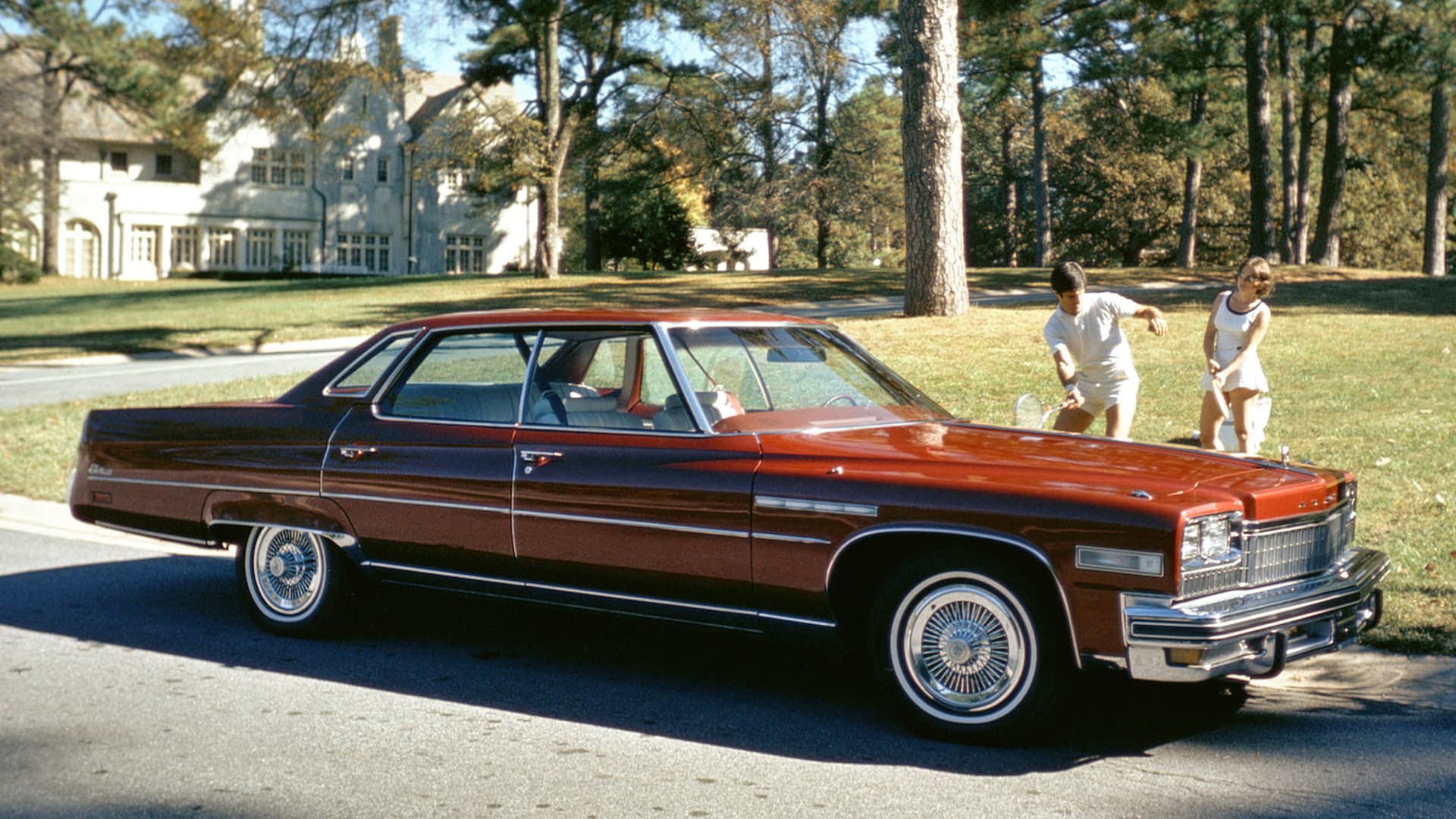
1974 Buick Electra 225
© GMNot only was the Buick Electra one of the biggest American land yachts ever created, stretching the tape measure to some 231.5 inches in length, it also contained safety features that are commonplace today.
Much like with turbocharging, General Motors experimented with airbag technology several years before it was introduced in Europe.
The Air Cushion Restraint System was offered across Buick, Cadillac, and Oldsmobile models in 1974, protecting both driver and passenger in the event of an impact. This was combined with lap seat belts, as GM believed the airbag system would replace the need for full three-point belts.
-
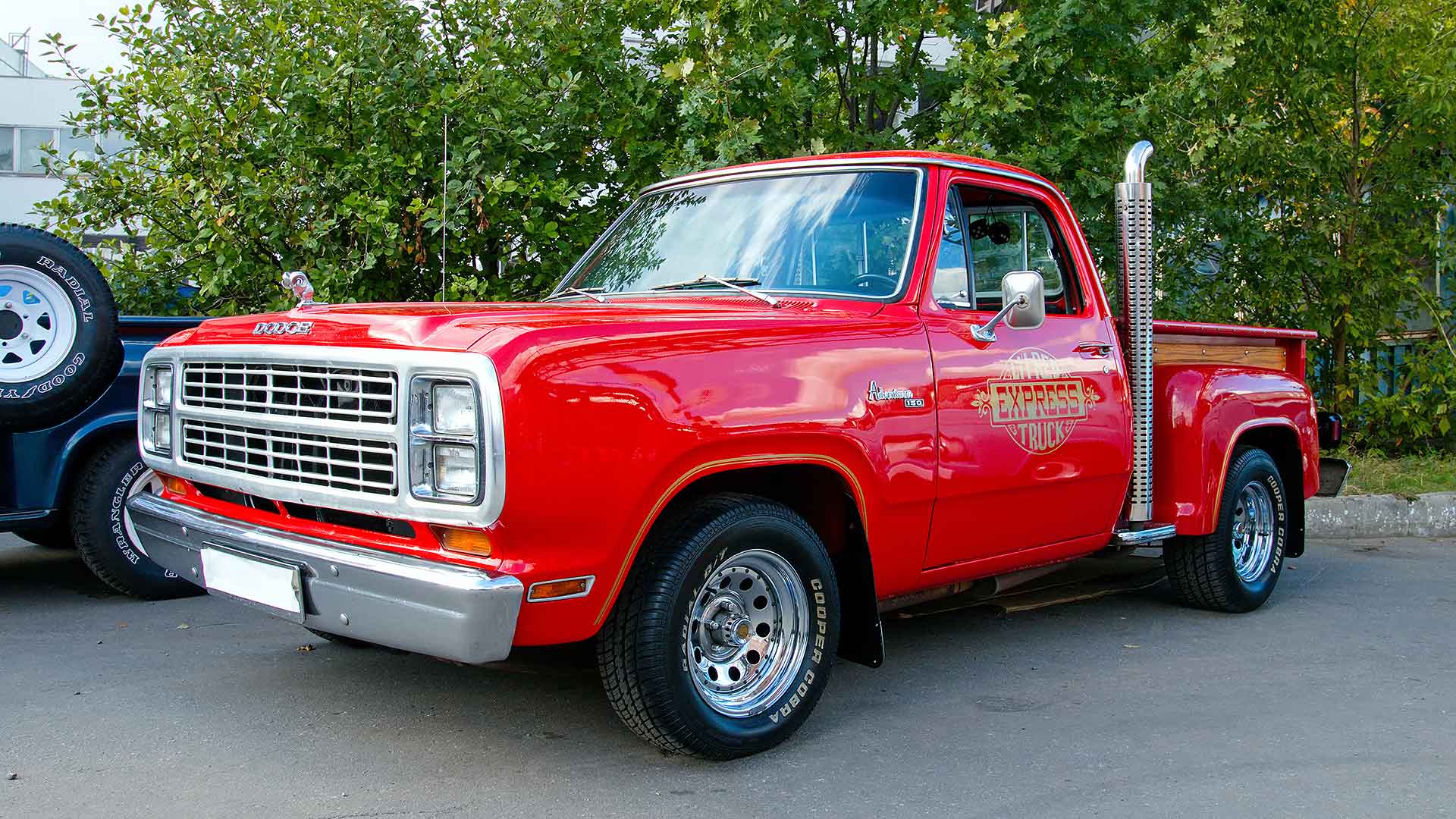
1978 Dodge Lil Red Express
© GettyReleased in 1978 as a special edition of the Dodge D-150 pickup, the Lil Red Express was one of the fastest American-made vehicles available at the time. A 360-cubic inch V-8 offered 225 horsepower, exhaling through dramatic vertical exhaust stacks.
The 1979 model added catalytic converters and unleaded gasoline to the package, but experts report no loss in performance. A total of 5,118 examples were produced for the 1979 model year, adding to the 2,188 sold the previous year.
Modern performance pickup trucks, like the Ram 1500 TRX, can trace their lineage back to the Lil Red Express.
-
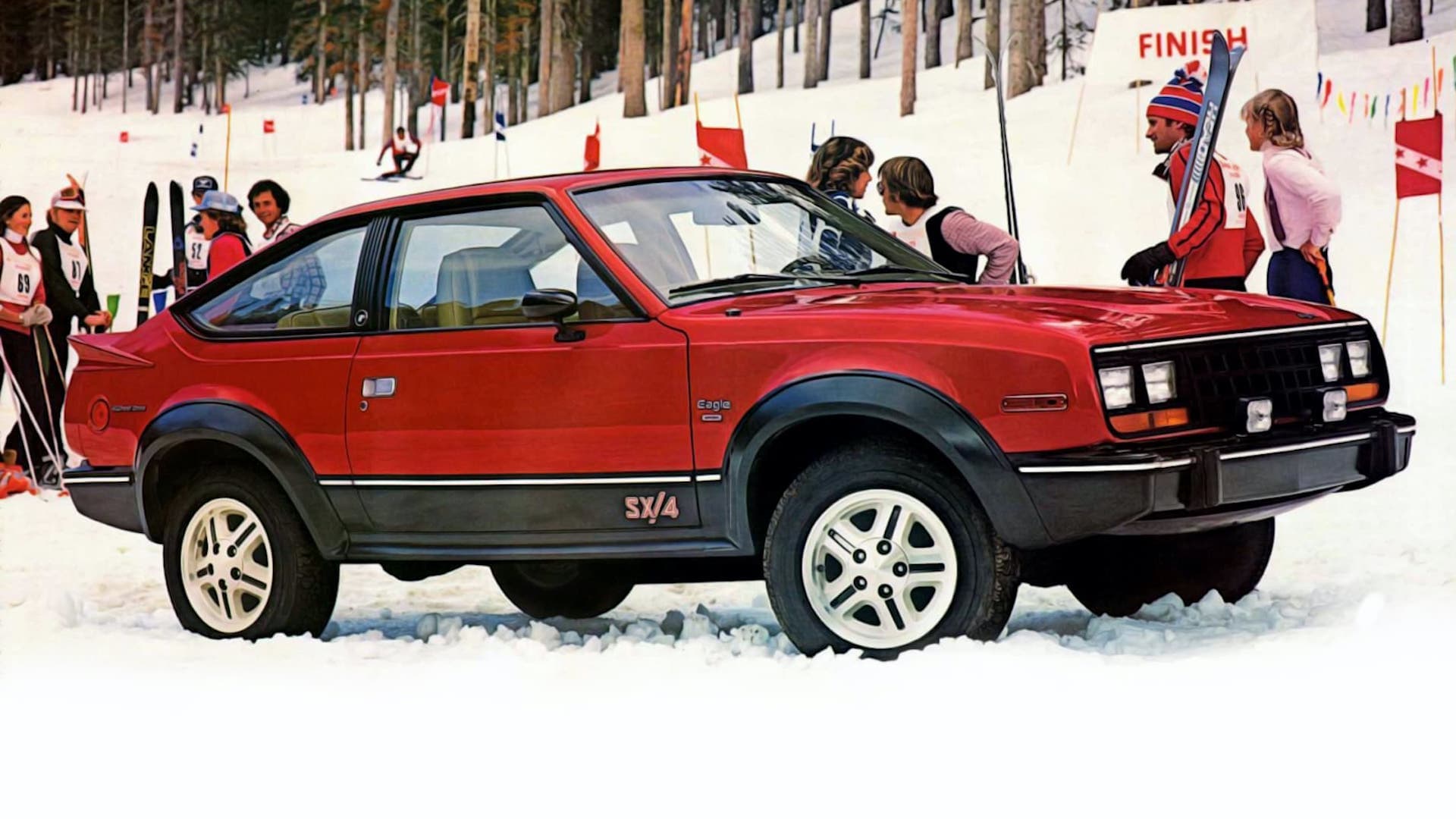
1980 AMC Eagle
© StellantisThe AMC brand may have disappeared at the end of the 1980s, but the legacy of the leftfield company still lives on. When introduced in 1980, the AMC Eagle range was alone in offering American-made four-wheel-drive passenger cars.
Buyers could pick from station wagon, sedan, or coupe body styles, all placed atop a 4WD chassis with a raised ride height. The Eagle wagon inspired more vehicles like the Subaru Outback, while the current trend for SUV coupes can also be linked to AMC’s designs.
Although a niche offering when new, the AMC Eagle predicted the future of the automotive market decades into the future.
-
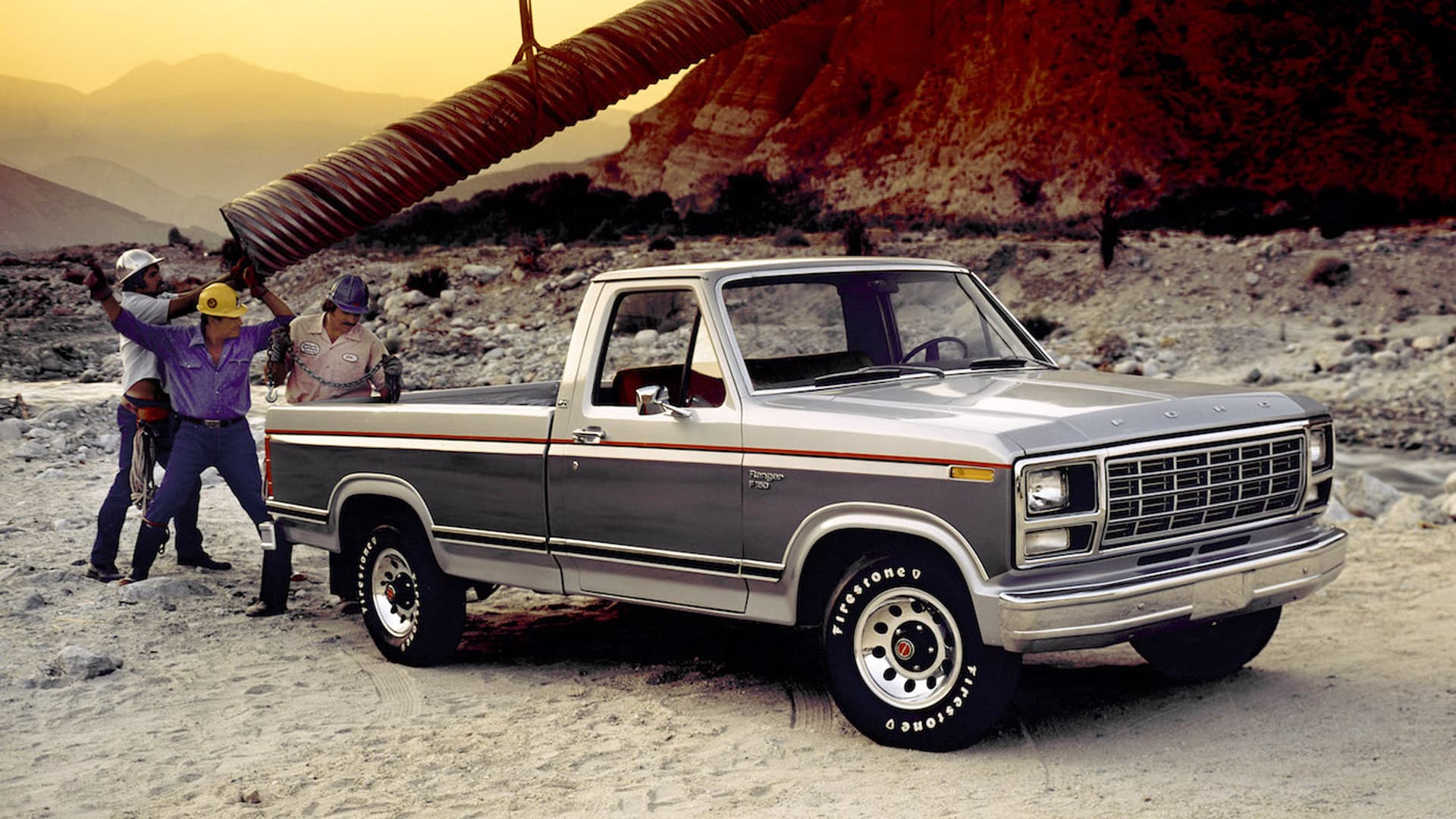
1980 Ford F 150
© FordAdmittedly the history of the Ford F-Series of pickup trucks stretches all the way back to 1948, but the seventh-generation truck introduced in 1980 is especially significant. A year later in 1981, the F-150 would become the single best-selling vehicle in the United States, and maintain that position for ever since.
In 2016, Ford sold over 820,000 F-150s, representing a 5.2 percent increase from the previous year, and adding more than 35 million sold since the range was first introduced.
Contrast that with the 21.5 million Volkswagen Beetles sold, and you see why the Ford pickup truck seems so commonplace in the USA.
-
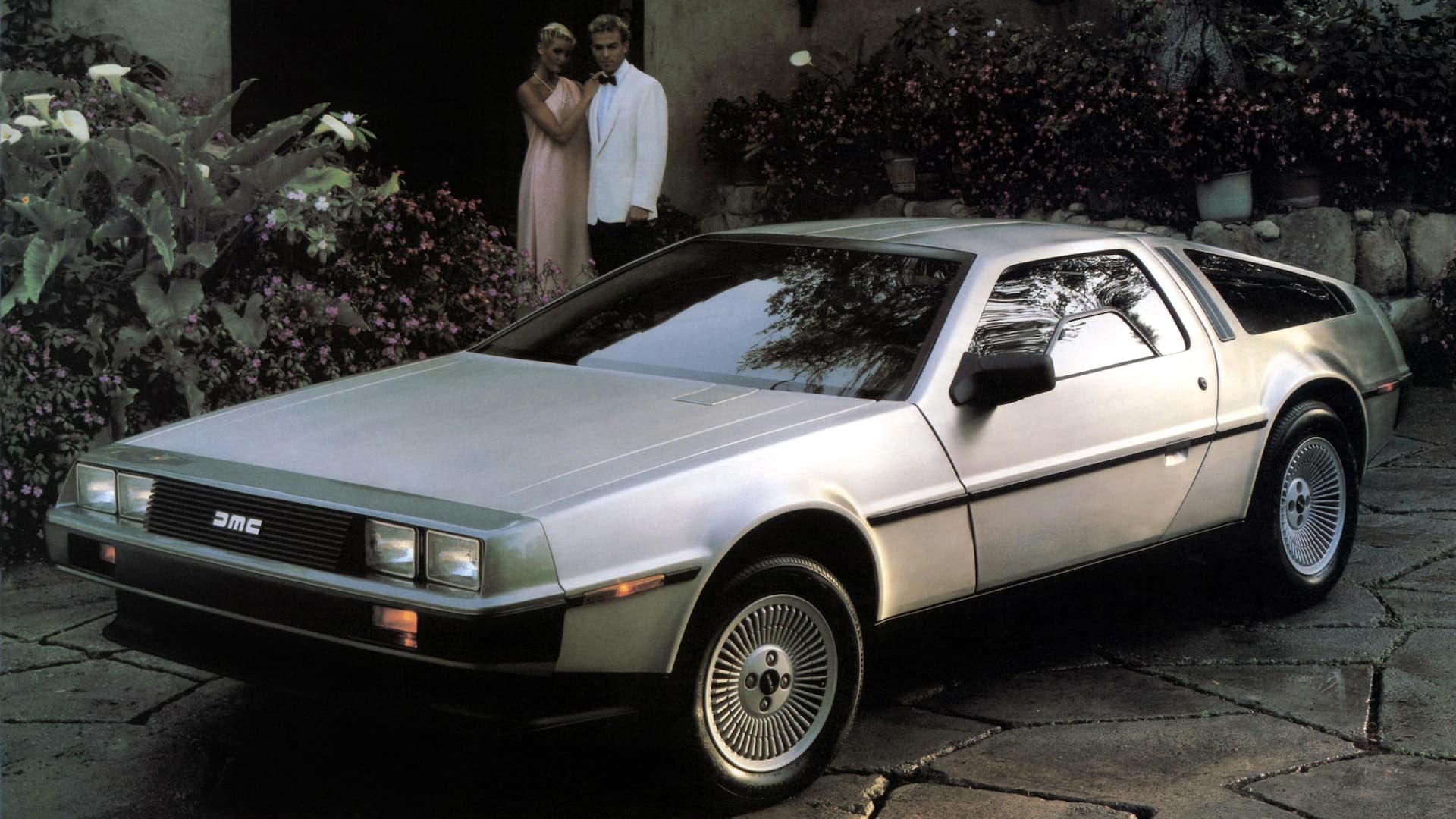
1981 DeLorean DMC 12
© DMCHistory has not always viewed the DeLorean DMC-12 kindly, tarnished by the bankruptcy and drug trafficking charges brought against company founder John DeLorean. That it was powered by a 2.8-liter V-6 with a modest 130 horsepower certainly didn’t help win approval either.
Now the DMC-12 has a legendary status, thanks to being the ‘time machine’ in the Back to the Future movie franchise. There is more to it than just movie magic, though, with stainless steel body panels and gull-wing doors making it look extraordinary.
John DeLorean was also ahead of the time in trying to appeal to the super-rich, with a gold-plated limited edition.
-
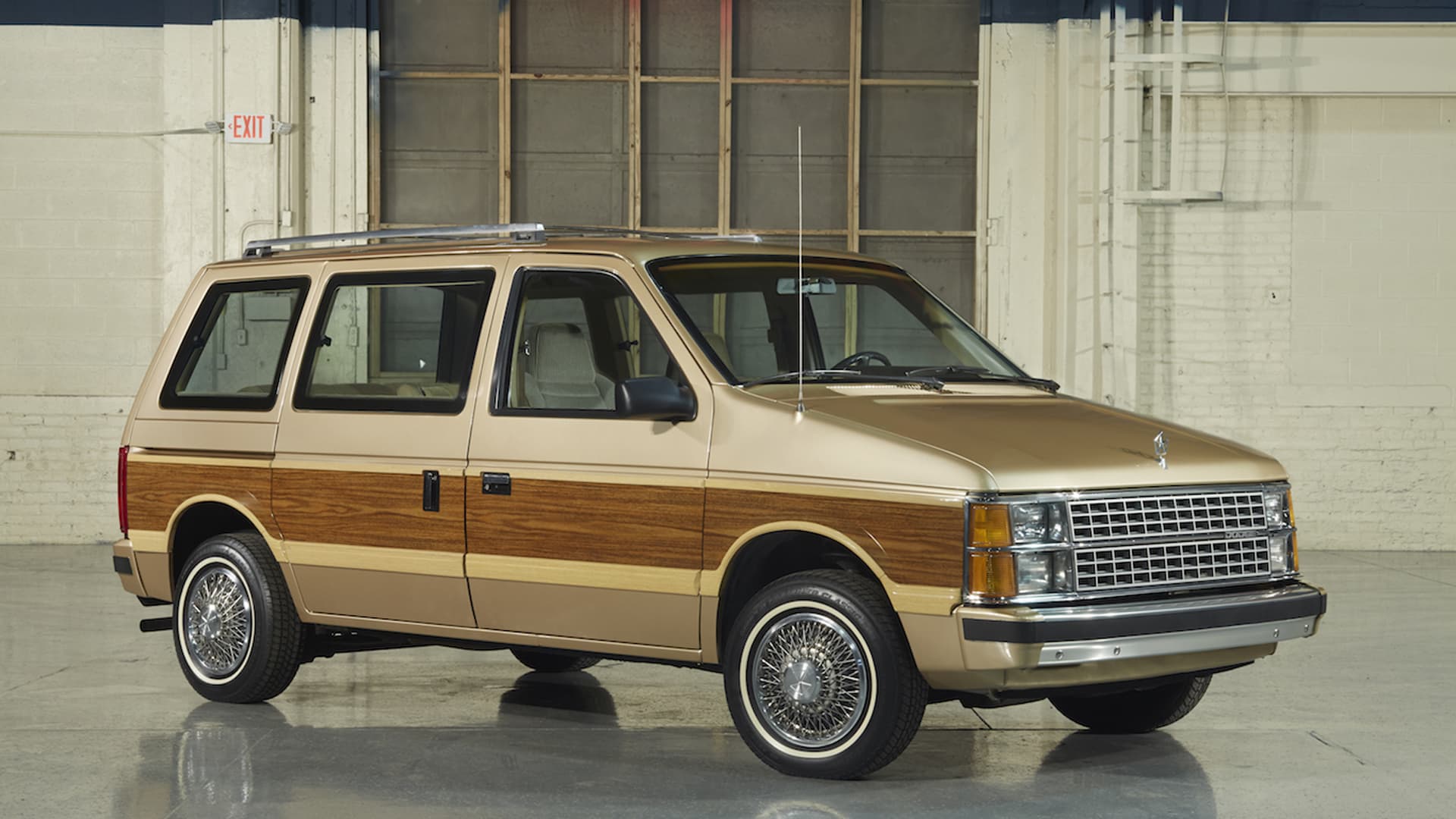
1984 Dodge Caravan
© StellantisBeating the Renault Espace to production by a matter of months, the Dodge Caravan (and related Chrysler brethren) became the first MPV on sale. Ruthlessly killing off the station wagon overnight, the minivan did at least keep that fake wood grain trim initially.
Families loved the sliding rear door, the potential for three rows of seating, and the low cost from being built on a front-wheel-drive platform. The Chrysler Corporation sold more than 200,000 minivans in 1984, and was selling more than 600,000 per annum by the late 1990s.
Then came the crossover SUV. It made the minivan instantly uncool, just as it had done to the station wagon.
-
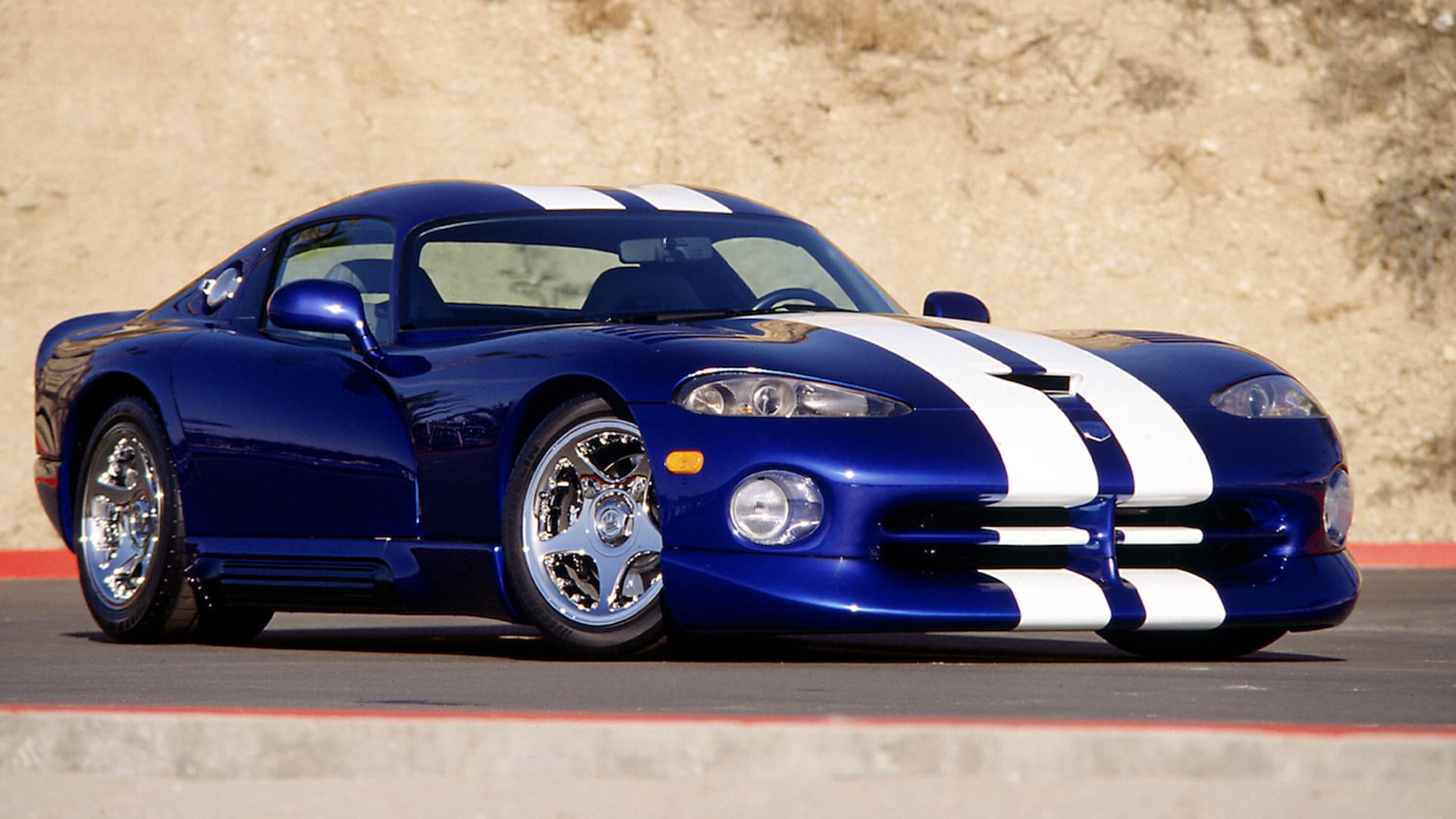
1996 Dodge Viper GTS
© StellantisBeing both achingly beautiful and terrifyingly fast would warrant the Dodge Viper being here on merit alone. However, having one of the largest engines ever offered in a production car also helps.
With 10 cylinders displacing 8.0 liters, the Viper GTS was even more powerful than the RT/10 roadster introduced before it, making 450 horsepower and 490 lb-ft of torque.
Later Vipers would have even more displacement and power, but the original GTS is just too pretty to ignore.
-
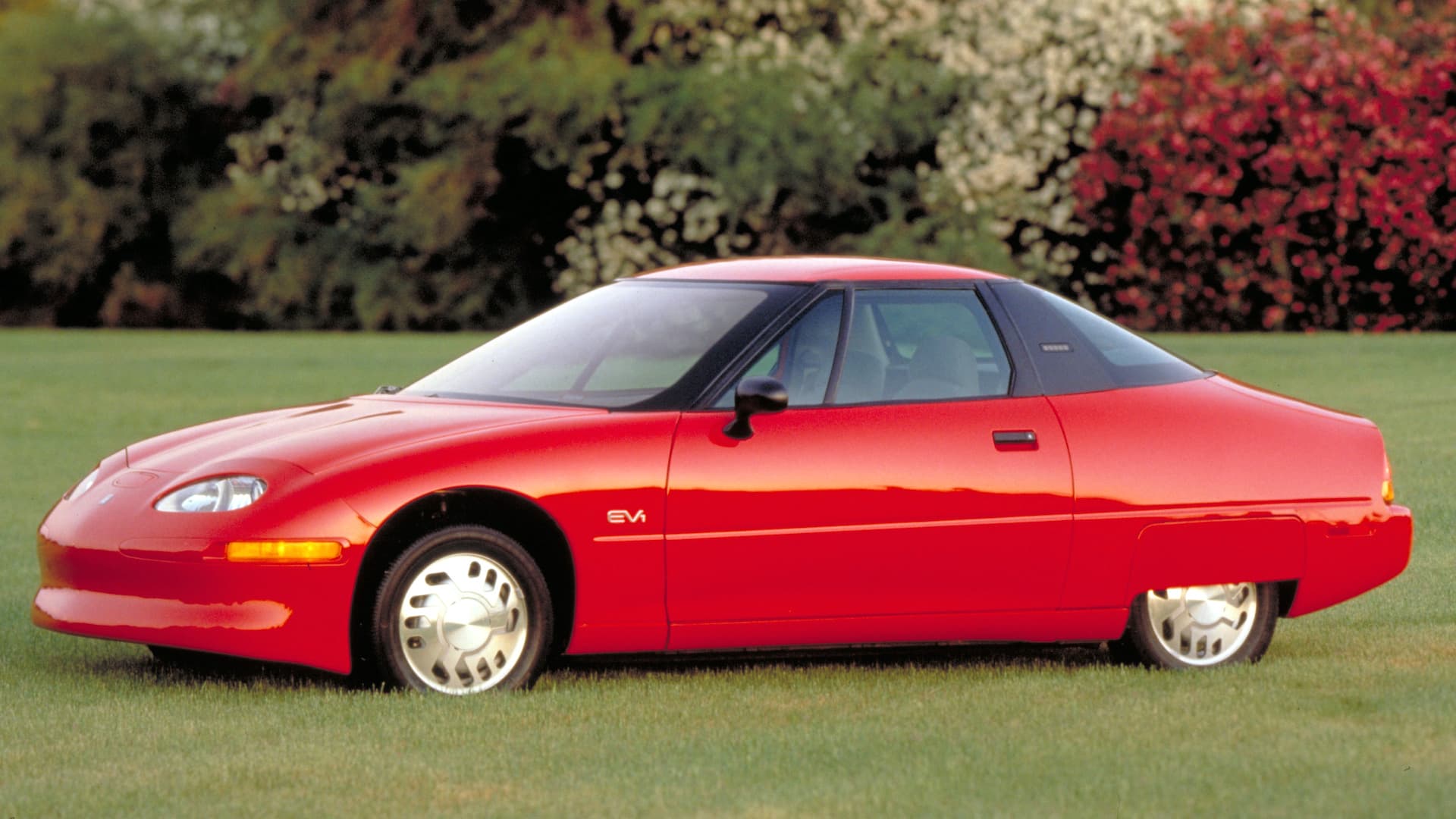
1996 General Motors EV1
© GMLeasing an electric car may seem relatively normal today, but General Motors pushed the boundaries with the idea in the 1990s. The EV1 was the first mass-produced modern electric car, using advanced aerodynamics and an efficient battery powertrain.
More than 1,100 examples of the EV1 were produced, and only offered through a leasing programme. In 2003, GM shutdown the EV1 project, and repossessed almost every model on the road.
These were subsequently crushed, with the company claiming the EV1 had demonstrated a lack of demand for electric vehicles.
-
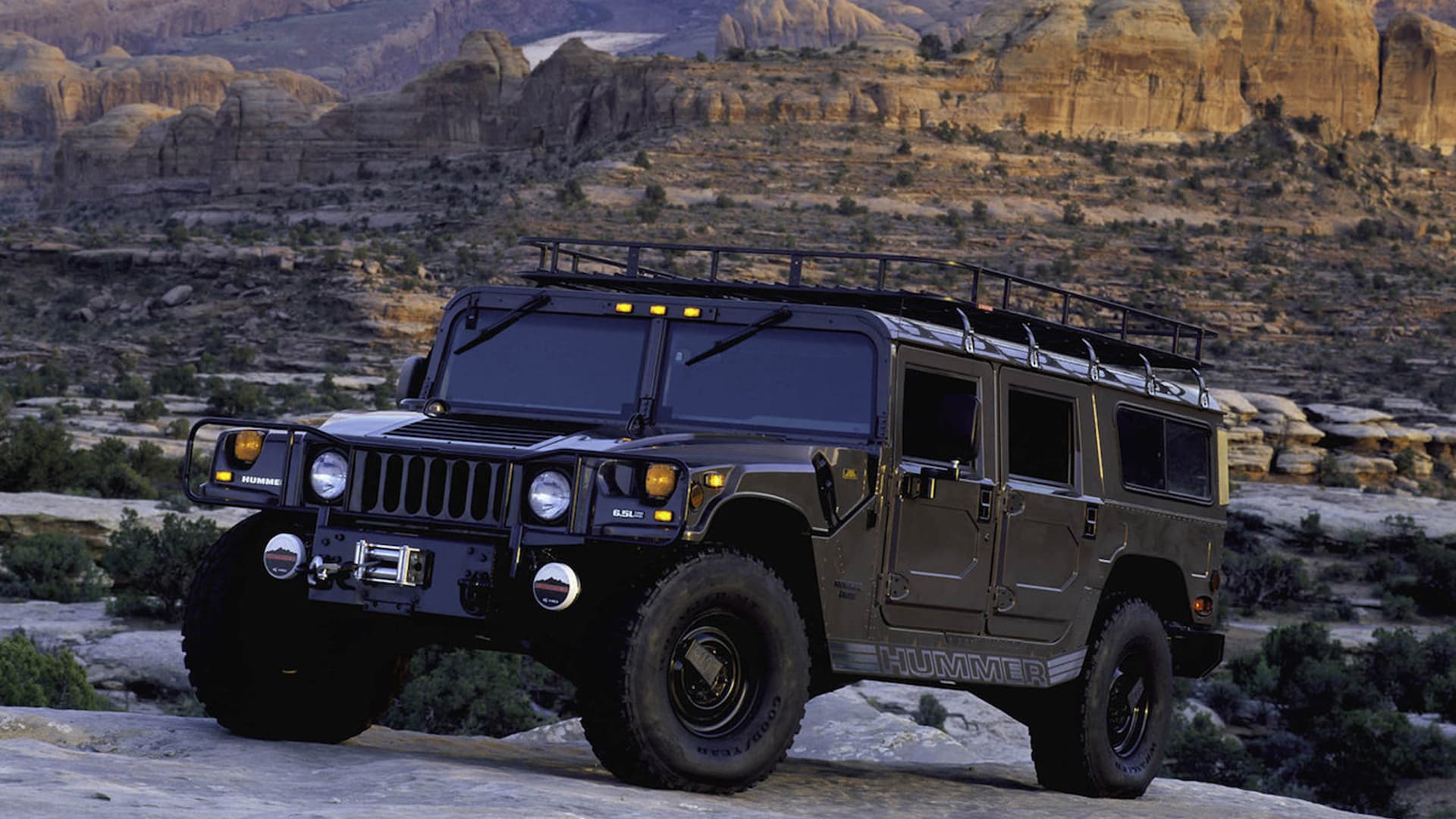
2002 Hummer H1
© GMInitially offered to the public after its success in Operation Desert Storm, the Hummer really was just a military vehicle with the faintest hint of civility. General Motors bought the brand name in 1999, and continued to market the original H1 alongside smaller SUV variants.
With a huge turbo diesel V-8 engine, wide track suspension, and the ability to ford 30 inches of water, the H1 was able to take on anything.
However, only a few people needed such capability at the best of times. This, combined with the cost of improving the H1 to meet new emissions regulations, meant GM abandoned it in 2006.
-
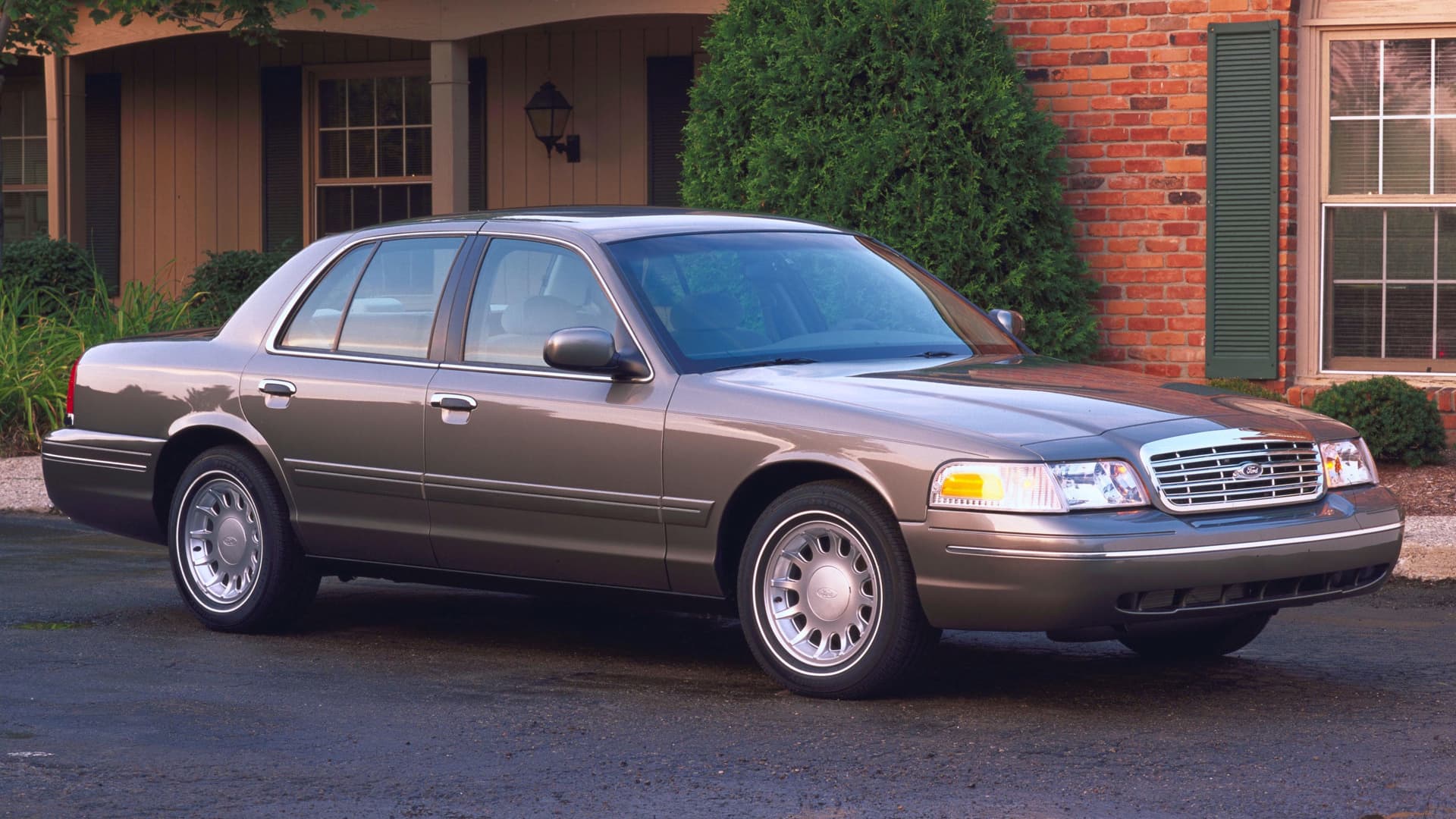
2006 Ford Crown Victoria
© FordImagine any typical American cop car or taxi cab, and the Ford Crown Victoria is likely to be the image that appears in your head. Using the Panther platform body-on-frame construction gave the Crown Victoria dependability, and ease of repair should it be involved in a collision.
These qualities were desired by fleet operators, and saw almost 10 million Panther platform cars produced between 1979 and 2011.
Ultimately the market for big, thirsty, rear-wheel-drive sedans diminished, but the Crown Vic remains an icon of car chases and movies.
-
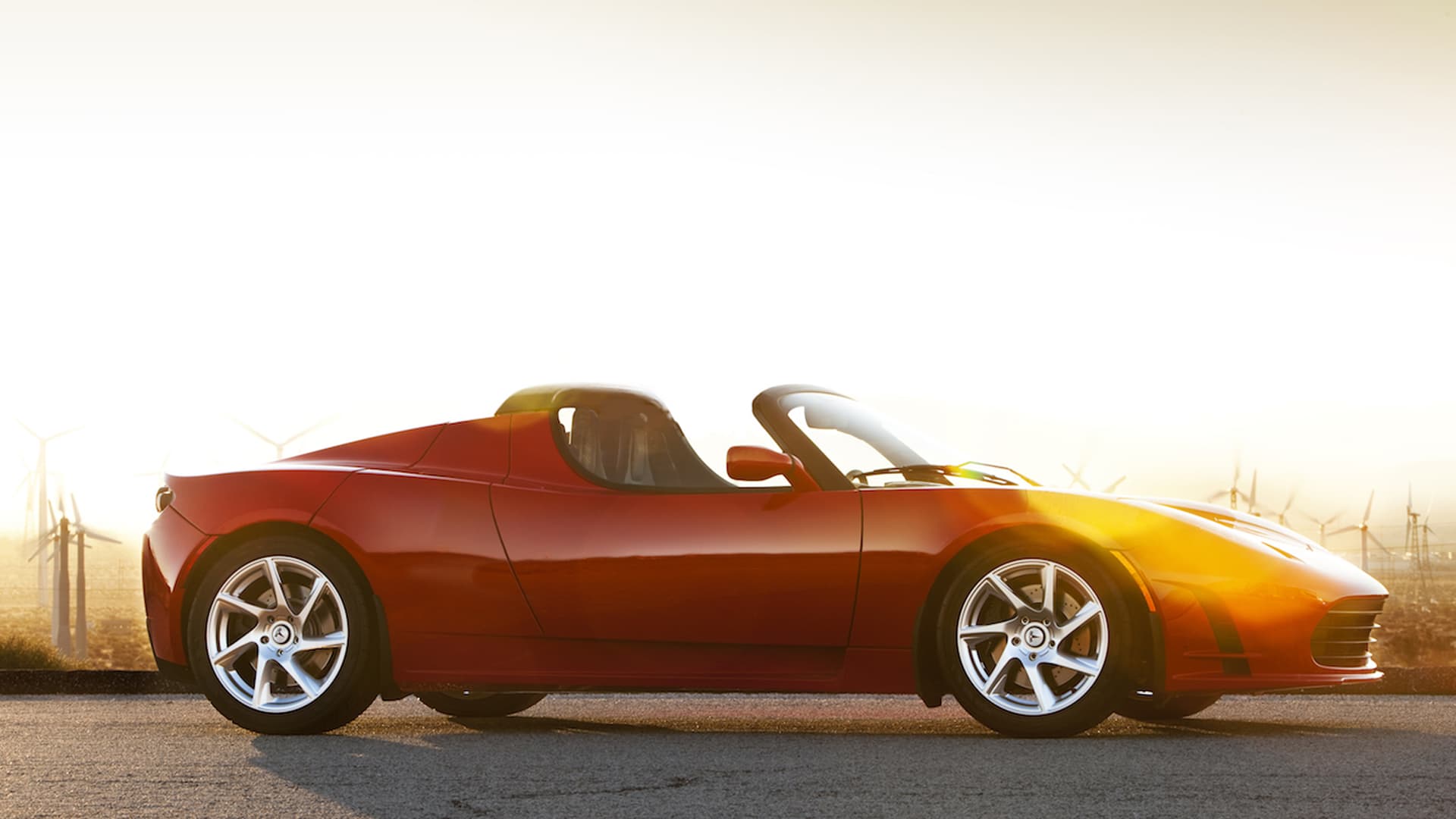
2008 Tesla Roadster
© Tesla MotorsTesla and Elon Musk might not have invented the electric car, but with the pioneering use of lithium-ion batteries, EVs became both practical and desirable. It took what GM had demonstrated with the EV1, but made it a commercial reality. The Roadster is the genesis for current Tesla range, including the fast-selling Model 3.
Adding an 185 kW (248 horsepower) electric motor to a chassis derived from a Lotus Elise resulted in 0-60mph in 3.9 seconds, and a top speed of 125 mph, silencing those who criticised EVs for being slow.
A theoretical range of over 240 miles on a single charge was the nail in the coffin for the haters.
-
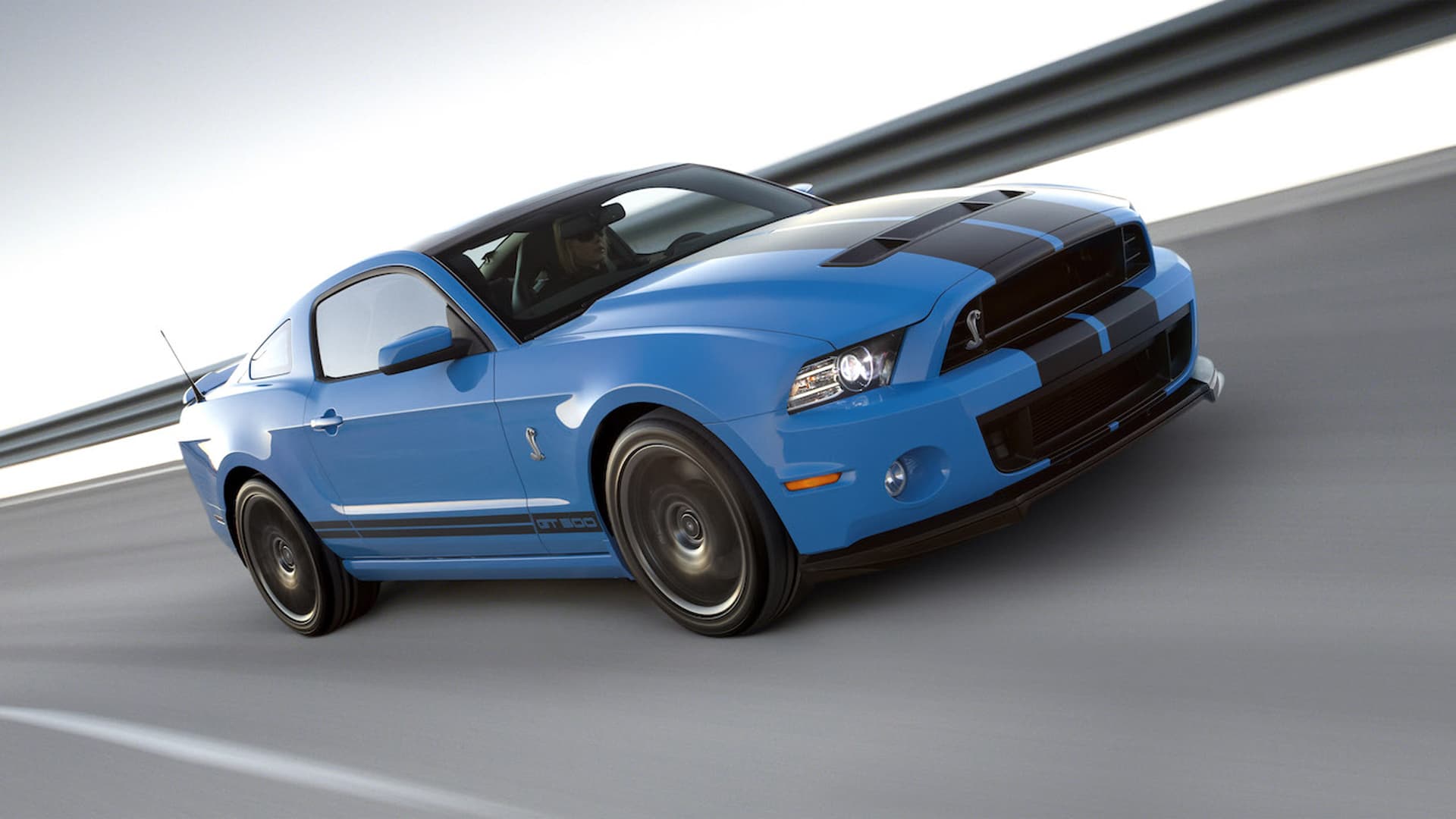
2013 Ford Shelby GT500 Mustang
© FordHaving been in production since 1964, picking a Mustang that best exemplifies it is not easy. The Boss 429, the ’67 Shelby GT500, and even the newest GT350R all have considerable merit. Choosing which not to include is simpler, with the second- and third-generation cars best left alone.
Ford rediscovered Mustang greatness with the fifth-generation, and the 2013 Shelby GT500 marked a milestone, with a top speed in excess of 200 mph. It meant the blue-collar muscle car could now claim performance previously only available to those driving exotic supercars.
A 5.8-liter supercharged V-8 engine, which produced 662 horsepower and 631 lb-ft of torque, was responsible for the big achievement.
-
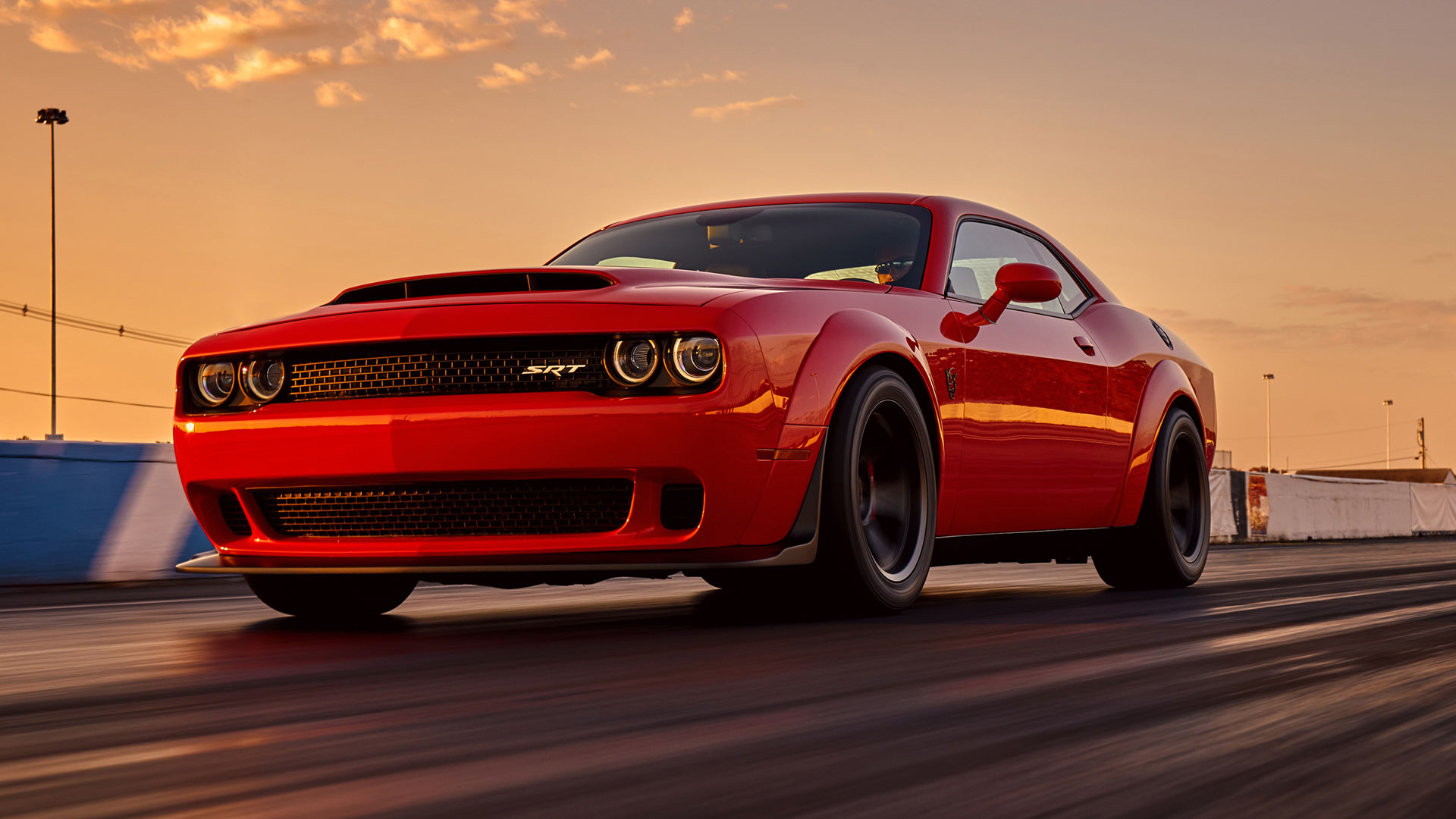
2018 Dodge Challenger SRT Demon
© StellantisBeing little more than a road-legal dragster, the Challenger SRT Demon encapsulates the craziness of a place where a Guinness World Record for the first front-wheel lift in a production car is a thing.
Other records set by the Mopar machine include the fastest production 0-60 mph time, most powerful production V-8 engine, and the first production car with the front-passenger seat deleted.
As incredible as it is ridiculous, the 840 horsepower SRT Demon is testimony to the American car industry catering to the most extreme of customer needs.
-
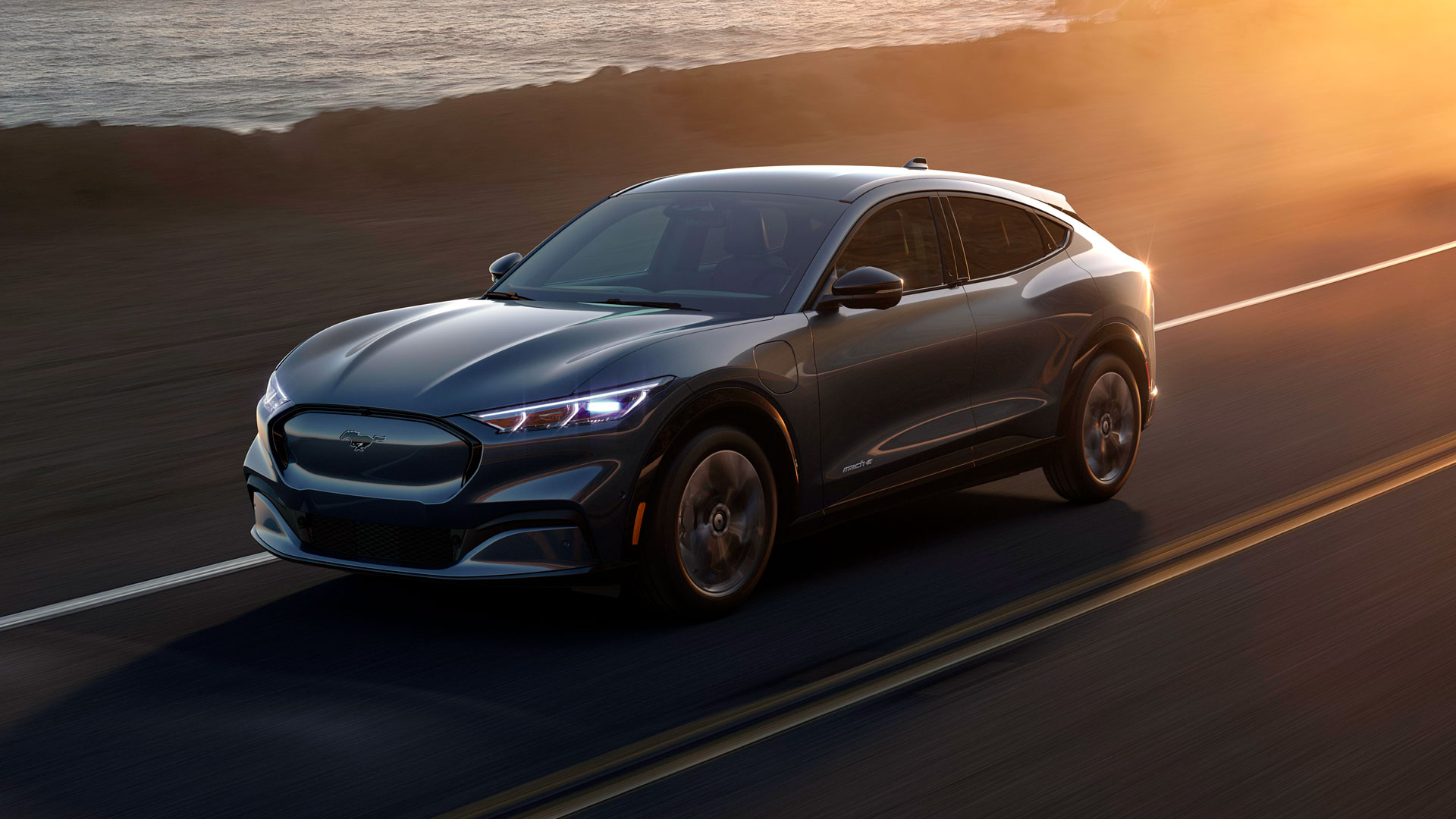
2020 Ford Mustang Mach E
© FordFord had been relatively slow to enter the electric car market. Other than low-volume production of the Focus Electric, and hybrid versions of other cars, the Blue Oval had shied away from electrification.
The release of the all-electric Mustang Mach-E shows just how serious Ford now is about electric vehicles. Naming the electric crossover after its famed muscle car is also a bold move, although the Mach-E has the performance to back it up.
Set to be launched in 2021, the Mustang Mach-E Performance Edition will have 480 horsepower, and accelerate from 0-60 mph in 3.5 seconds.
-
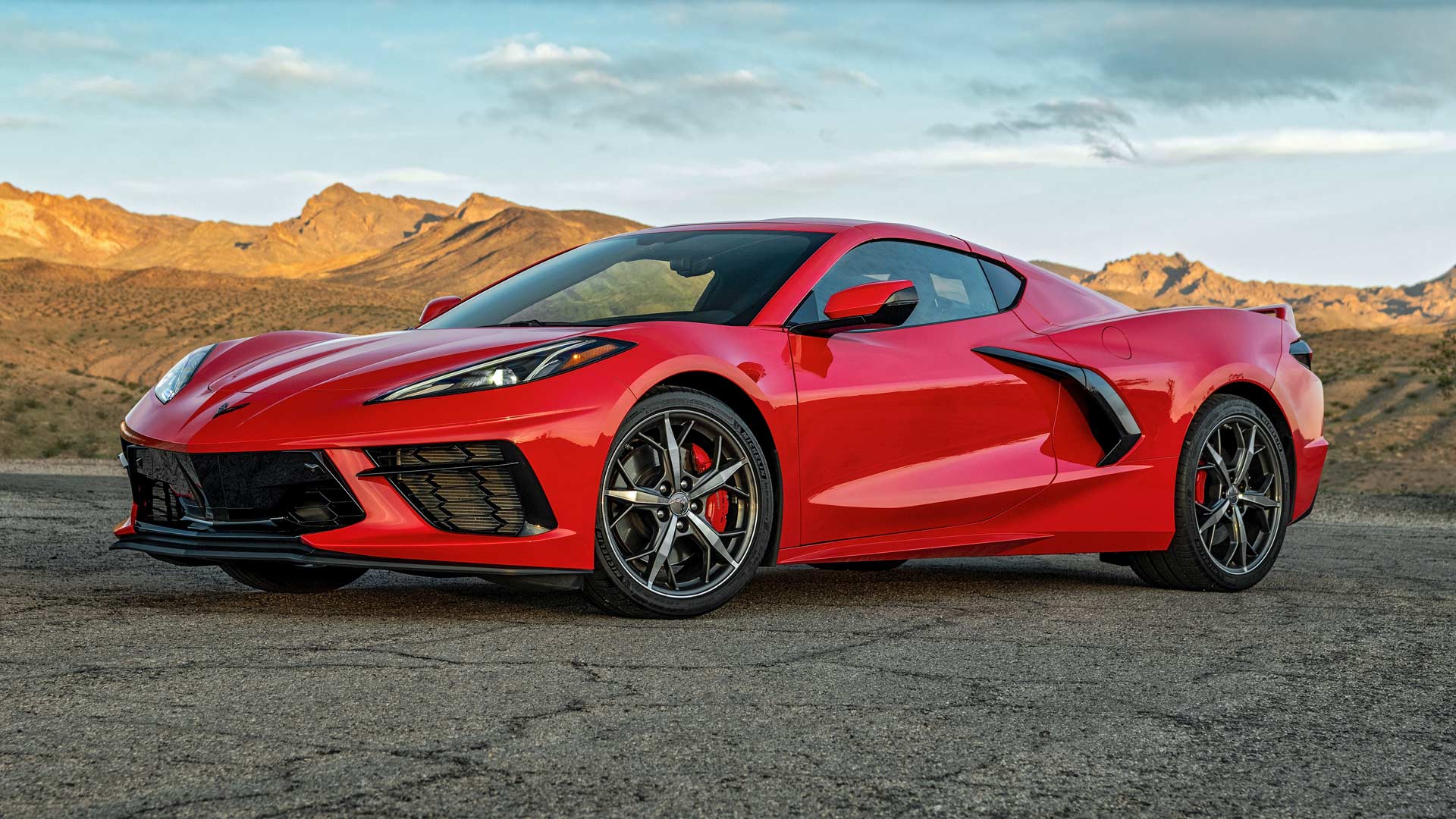
2020 Chevrolet C8 Corvette Stingray
© ChevroletChevrolet’s decision to make the C8 Corvette Stingray mid-engined is hugely significant. The company had experimented with several mid-engined concepts before, but had never made the move away from a front-engined layout.
The need to appeal to younger buyers, and ensure the Corvette continues to push forward on performance, led to the 6.2-liter engine being mid-mounted. Using an eight-speed dual-clutch transmission is also a bold move.
Another factor making the eight-generation Corvette important is the plan for right-hand-drive production. Since the very first Corvette of 1953, America’s sports car has only ever been offered in left-hand drive. The change will mean a wider range of customers can now consider the ’Vette.